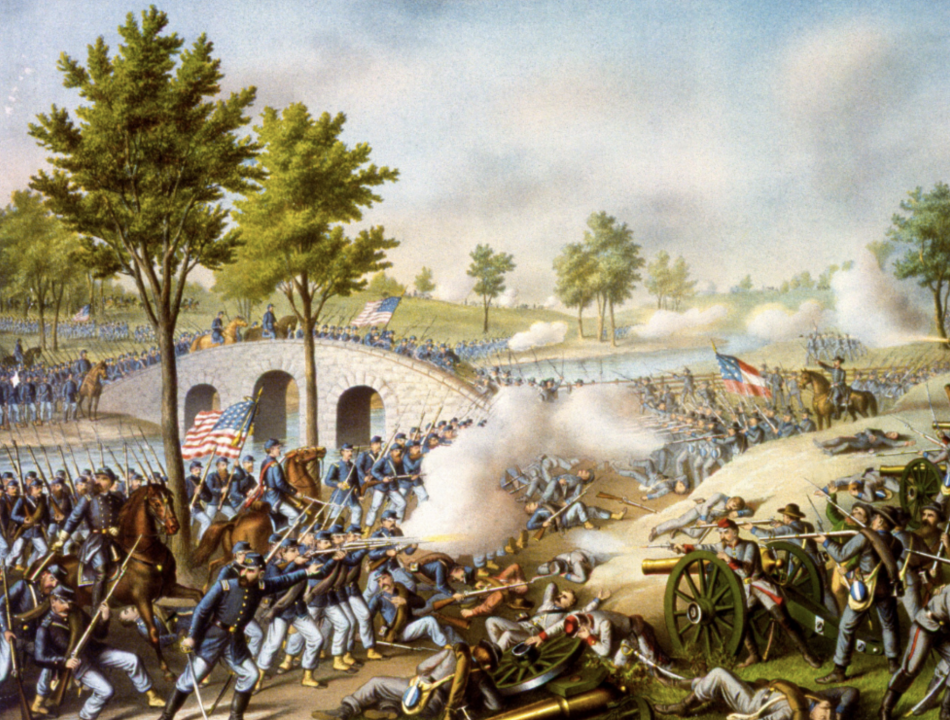What 25 historic battlefields look like today
Published 6:00 am Wednesday, November 3, 2021
MPI // Getty Images
What 25 historic battlefields look like today
The United States has fought 12 major wars in its history. That’s an average of a major war every 20 years. The early ones were fought right here at home, but for the last century and a half or so, America’s armed forces have fought overseas. During that time, the country has gone from not even being a country at all to securing its status as the mightiest nation in the history of the world.
Through its military, the United States can project its awesome power anywhere in the world at any time under any circumstances. Sometimes those circumstances involve stopping bloodthirsty conquerors like Adolph Hitler. Other times, war is necessitated by attacks on America’s allies. In the most unfortunate chapters in its history, the U.S. dumped resources and human lives not into wars of necessity, but wars of choice. When the bloodshed starts, however, none of that matters to the people on the ground, and combat is what it’s always been: human beings fighting for their own survival and that of those beside them on the field of battle.
Some battlefields have been actual fields. Others have been distant beaches, dense forests, lush jungles, barren deserts, soaring mountains, ancient villages, or frozen lands of ice and snow. Every single one of those places wasn’t a battlefield until the fighting began and every single one of them ceased to be a battlefield after the last shot was fired.
The following images are an examination of what became of the sites where America waged its most important and often most brutal campaigns of war. Using a variety of sources, Stacker selected 25 historically significant battlefields in American history. For each one, Stacker investigated what happened there when the battles raged as well as what became of those hallowed grounds when the fighting concluded.
These are the battlefields that defined the United States military’s journey from upstart Colonial rebels to an invincible global war machine.
You may also like: Iconic buildings that were demolished
![]()
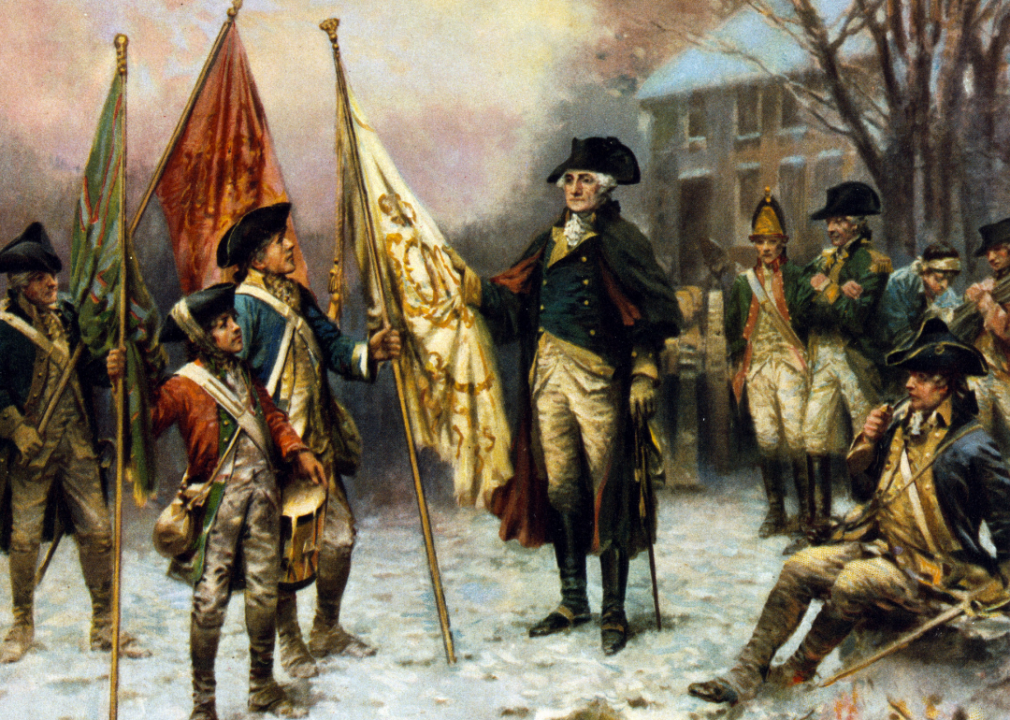
Universal History Archive/UIG // Getty images
Then: Trenton, New Jersey (1776)
With winter setting in and his army reeling from a string of bruising defeats near New York City, Gen. George Washington devised a plan to turn the tide of the Revolutionary War and reinvigorate his forces. In one of the most celebrated moments in U.S. military history, Washington secretly ferried his men across the frigid Delaware River on Christmas night in 1776 to attack the British-loyal Hessian garrison that was camped for the winter in Trenton, New Jersey. The Americans prevailed in the Battle of Trenton, killing or capturing large numbers of soldiers and supplies and, most importantly, boosting morale and spurring a new wave of enlistments.
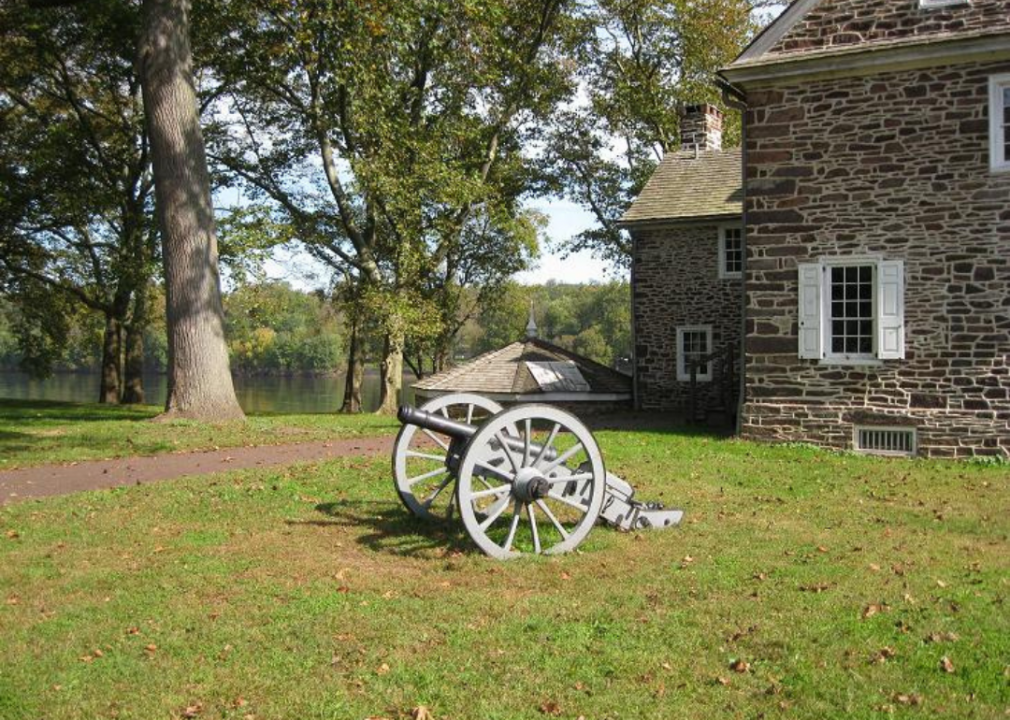
Djmaschek // Wikimedia Commons
Now: Trenton, New Jersey
Today, Trenton is the capital city of New Jersey—although for a short while in 1784, it was the capital of the United States. The Trenton Battle Monument and the Old Barracks Museum are just a few of the sites dedicated to the improbable and ingenious victory that George Washington engineered there at the dawn of America’s existence.
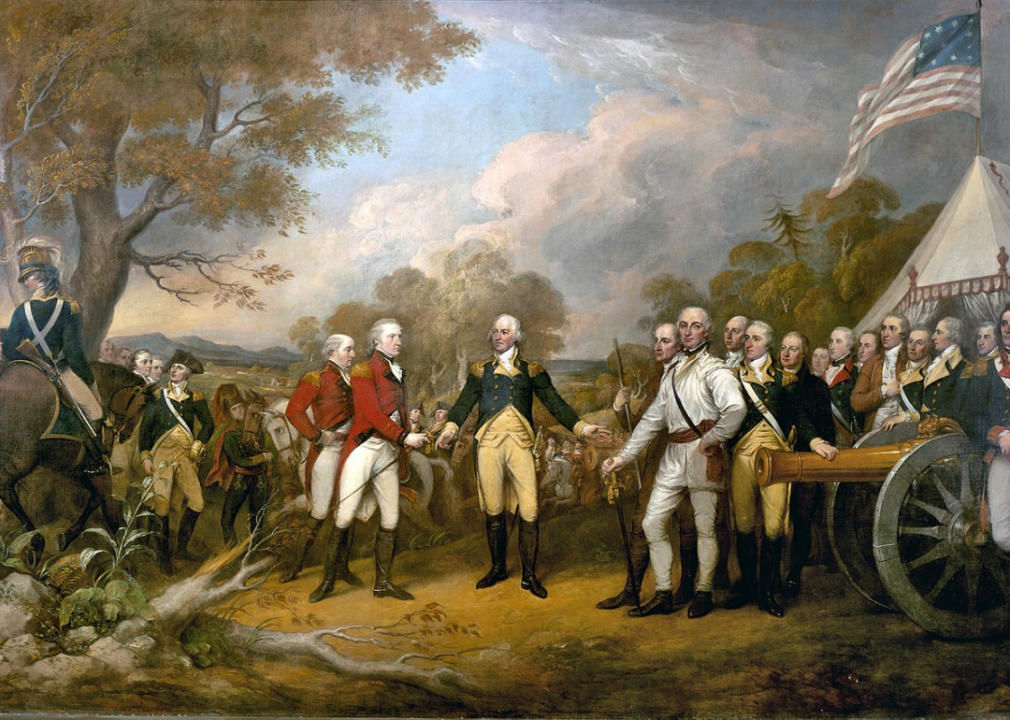
John Trumbull // Wikimedia Commons
Then: Saratoga, New York (1777)
A crucial turning point in the Revolutionary War came in 1777 when American troops surrounded and defeated forces led by British Gen. John Burgoyne at the Battle of Saratoga. The decisive American victory thwarted British plans to divide the fledgling country and separate New England from the rest of the colonies. Representing a crucial turning point in the war, the colonists’ success at Saratoga convinced France and other major world powers that the young country was worth supporting against their British adversaries.
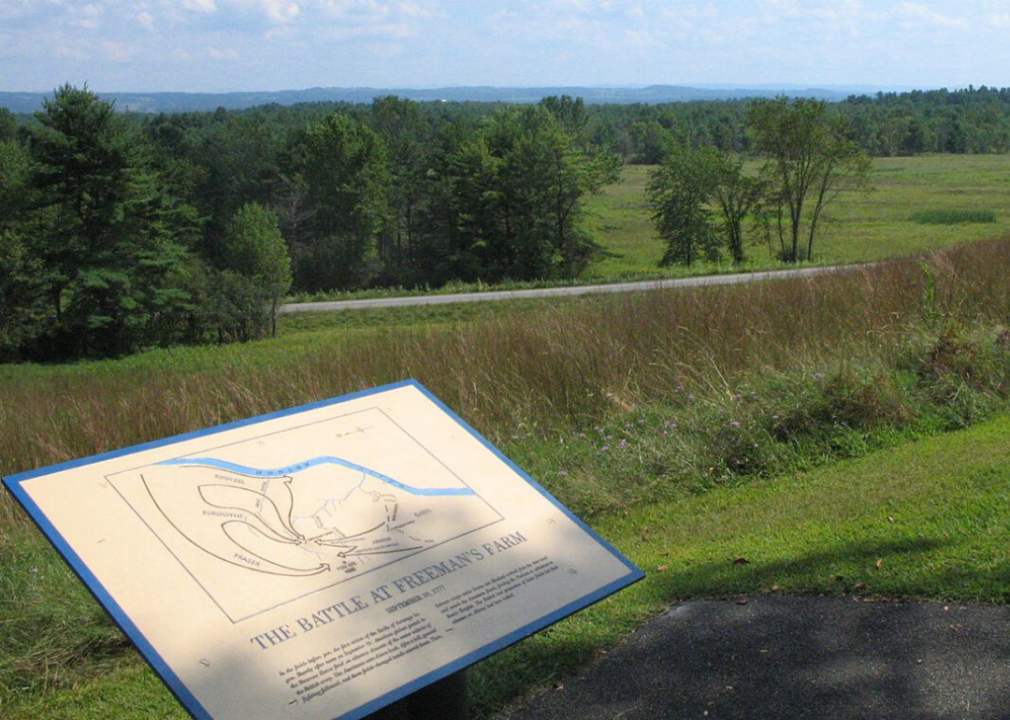
Unknown // Wikimedia Commons
Now: Saratoga, New York
Saratoga County, particularly Saratoga Springs, is a major Upstate New York tourist destination famous for its mineral springs, manicured parks, racetrack, bustling downtown, nature preserves, nightlife, dining, and other hospitality offerings. Among the attractions are several historical monuments to the Battle of Saratoga and the Colonial era in New York.
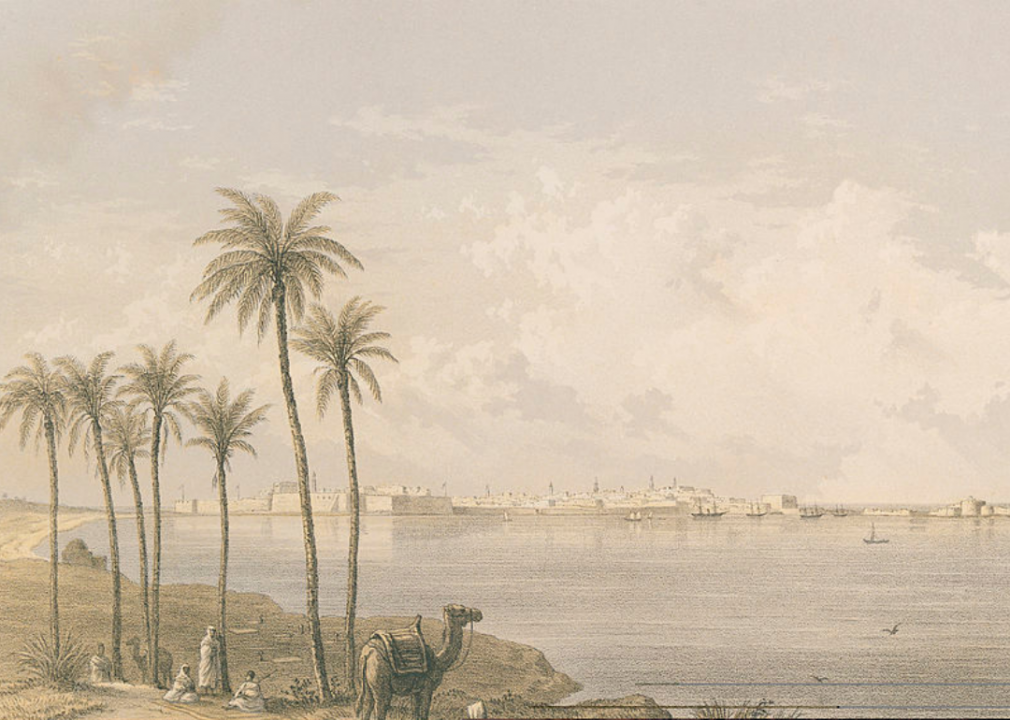
Hulton Archive // Getty Images
Then: Tripoli (1805)
Although two Barbary Wars would be fought a decade apart, it was the First Barbary War that memorialized “the shores of Tripoli” in the Marines’ Hymn. Pirates from the four states of the Barbary Coast—Tripoli, Tunis, Algiers, and Morocco—had spent years terrorizing and seizing American merchant ships, stealing cargo, and killing, impressing, and kidnapping American sailors for ransom. The Barbary rulers demanded the U.S. send treasure and tribute to make it stop—Thomas Jefferson sent the Marines instead.
You may also like: A timeline of WWII, the most devastating conflict in history
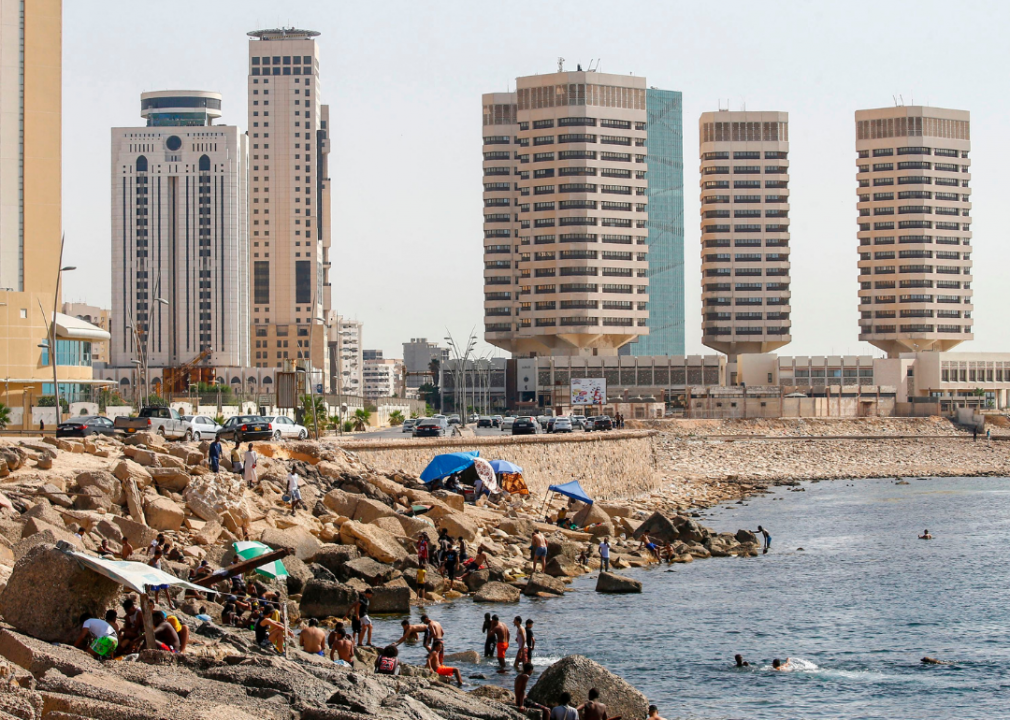
MAHMUD TURKIA/AFP // Getty Images
Now: Tripoli
In the time of the Barbary pirates, Tripoli, which means “Three Cities,” was an autonomous state that was loosely organized as part of the Ottoman Empire. Today, it’s the capital city of the North African nation of Libya.
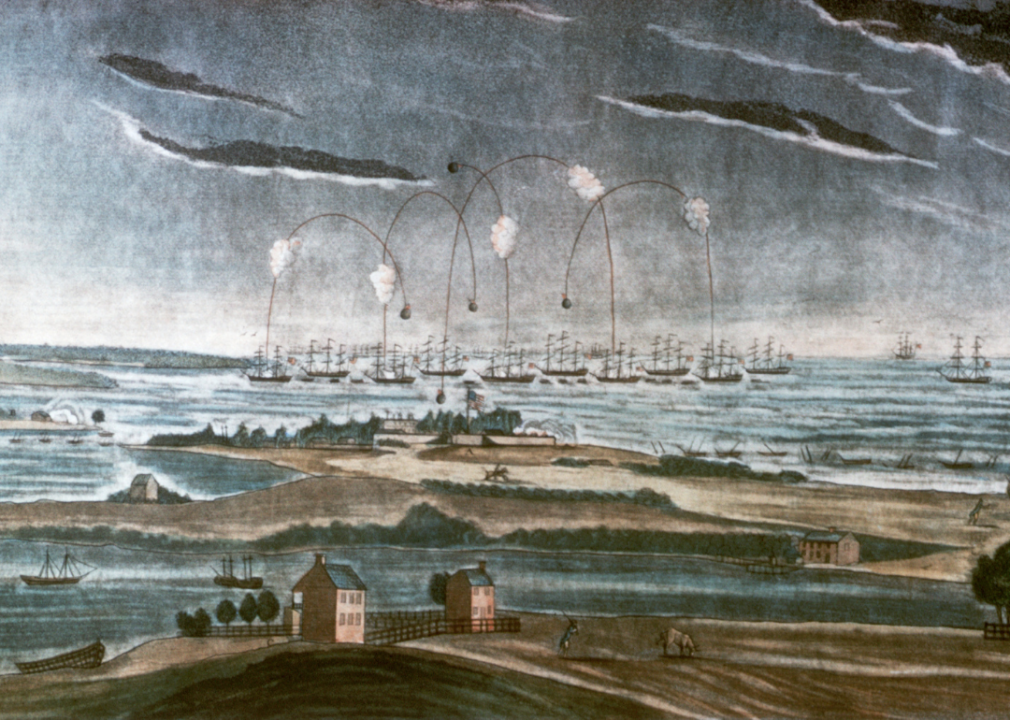
Bettmann // Getty Images
Then: Fort McHenry, Baltimore (1814)
The sight of the American flag flying over Fort McHenry after its American defenders endured relentless British naval shelling during the Battle of Baltimore inspired Francis Scott Key to write “The Star-Spangled Banner.” For two days in 1814 between September 14-15, the outmatched Americans repelled both land and sea attacks by the British, defended Fort McHenry, and secured control of the crucial Baltimore Harbor in one of the most pivotal battles in the War of 1812.
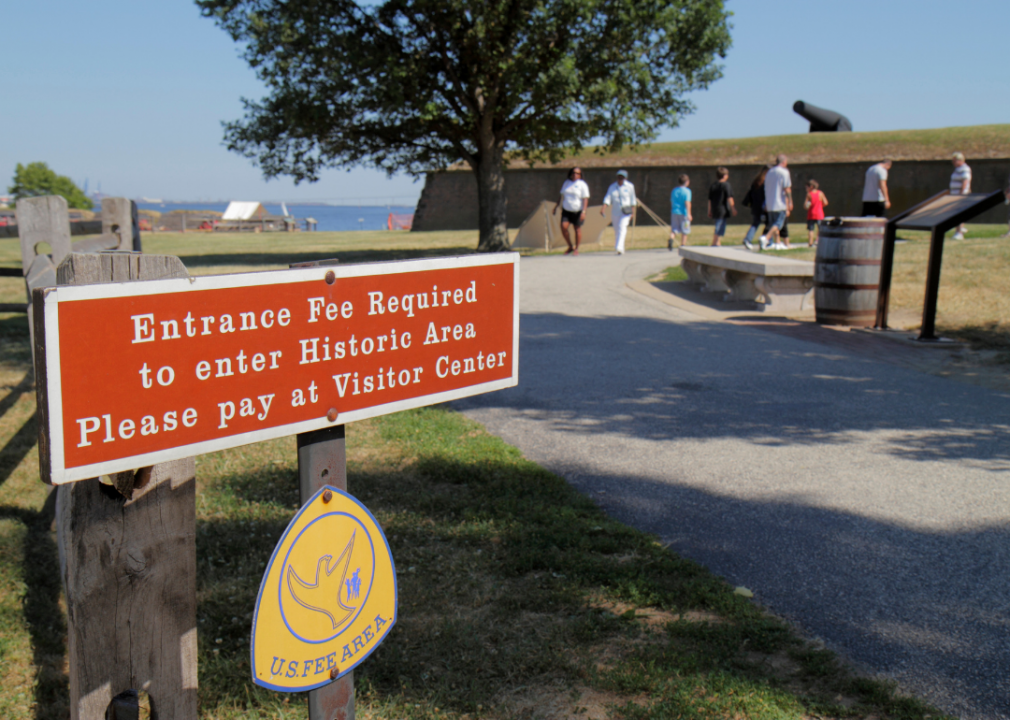
Jeffrey Greenberg // Getty Images
Today: Fort McHenry, Baltimore
Today, Fort McHenry is classified as a national monument and historic shrine. Hundreds of thousands of visitors file through it every year to immerse themselves in the fort’s history, which is by no means limited to the War of 1812. Built during the Revolution, Fort McHenry played a role in America’s primary coastal defenses through World War II.
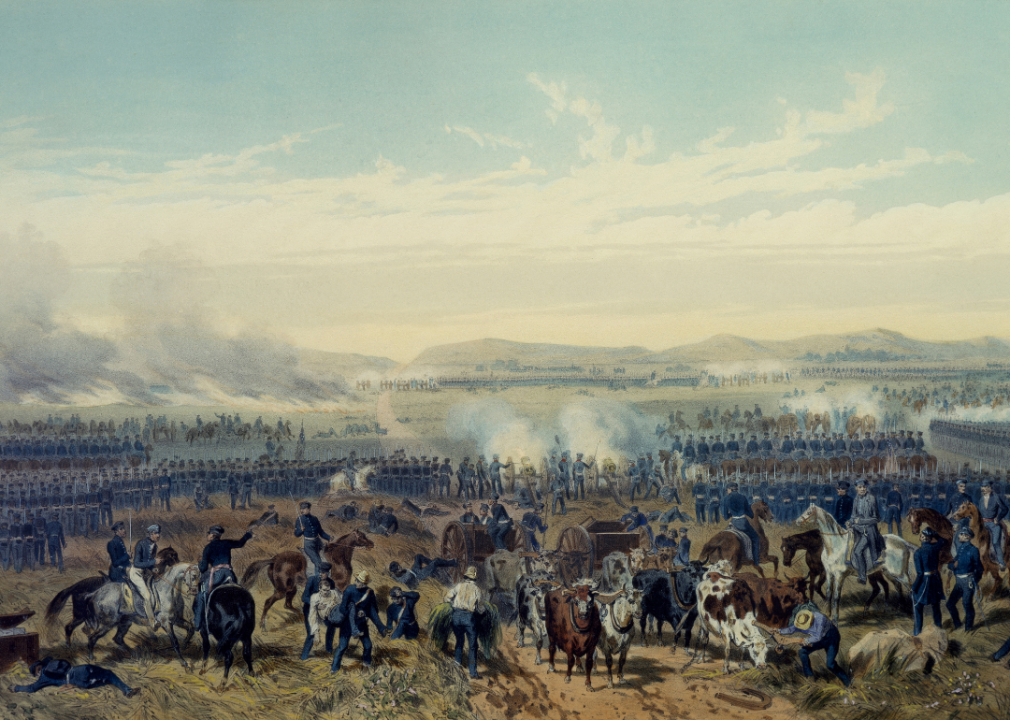
DeAgostini // Getty Images
Then: Palo Alto, Texas (1846)
Long-simmering tensions with Mexico had come to a boil by 1846, a time when America was led by President James K. Polk, a radical expansionist guided by the concept of Manifest Destiny, which he believed was a mandate from God that the United States should stretch from the Atlantic to the Pacific oceans. The problem was that much of the West that Polk wanted for the United States was Mexican territory, including modern California, New Mexico, Utah, Nevada, and Texas. The first real battle of the Mexican-American War was staged at Palo Alto, where U.S. Gen. Zachary Taylor defeated a superior Mexican force and eventually crossed the Rio Grande to take the fighting to Mexican soil.
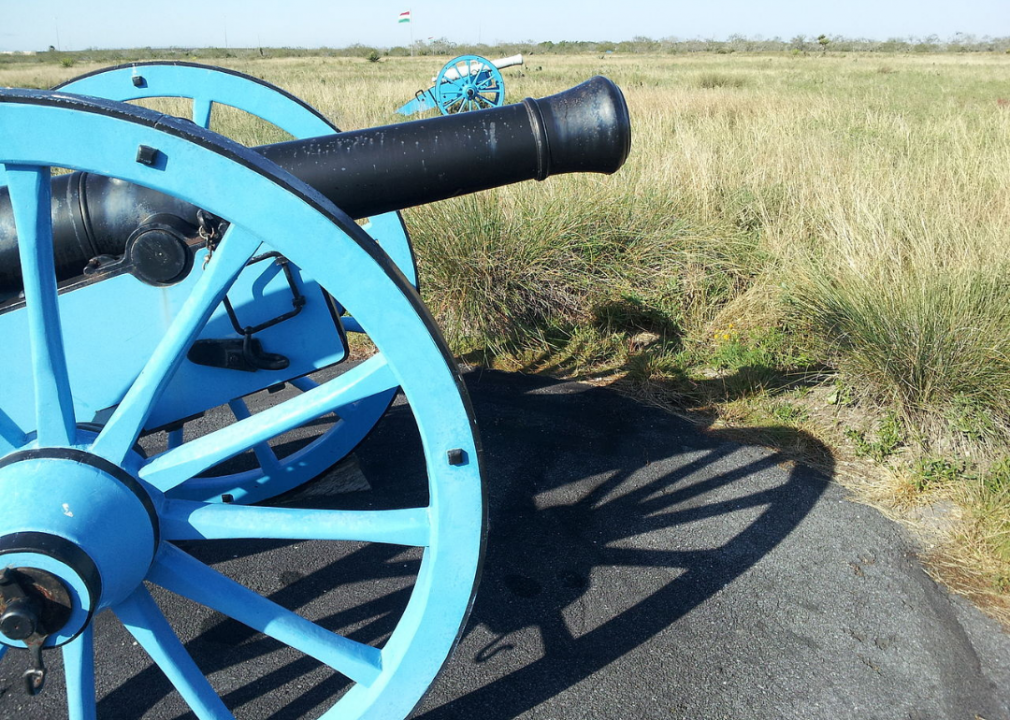
Pi3.124 // Wikimedia Commons
Now: Palo Alto, Texas
The Battle of Palo Alto was the first fight in a war that would dramatically alter the map of North America forever. The town is located in southwestern Nueces County in Texas, near Corpus Christi. Tourists who go there can visit the Palo Alto Battlefield, which is maintained by the U.S. National Park Service.
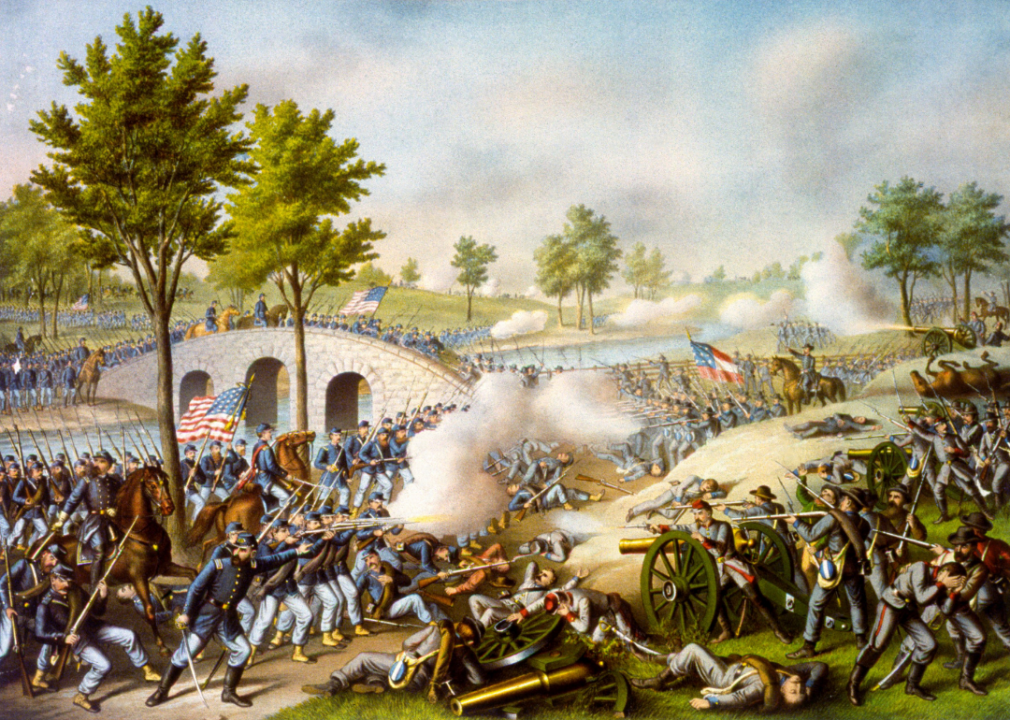
MPI // Getty Images
Then: Sharpsburg, Maryland (1862)
The Battle of Antietam, commonly called the Battle of Sharpsburg among Confederates, remains the single bloodiest day in American military history. Union Gen. George B. McClellan’s Army of the Potomac clashed with Confederate Gen. Robert E. Lee’s Army of Northern Virginia in an epic showdown that was defined by poor tactical decision-making and lethal new military technology, both of which contributed to the carnage. In a single 24-hour period, roughly 23,000 Americans were dead, wounded, or missing.
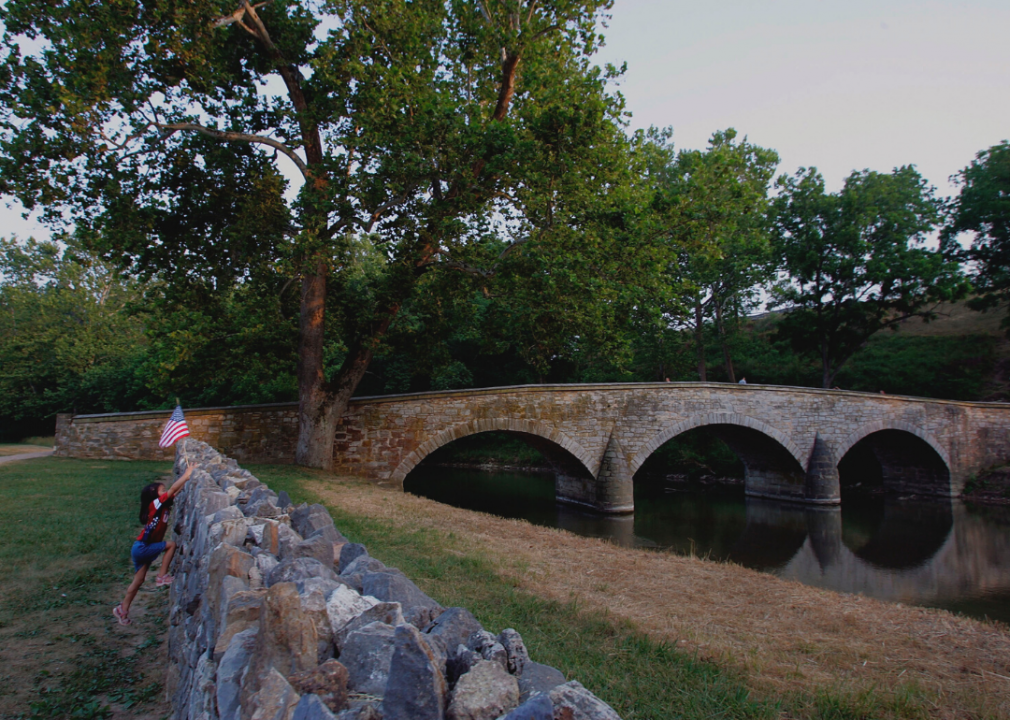
Joe Raedle // Getty Images
Now: Sharpsburg, Maryland
The town of Sharpsburg still looks much like it did when the two great armies gathered there to slaughter each other more than 150 years ago—as does the adjacent Antietam battlefield. The somber site still draws visitors from all over the world, who together far outnumber the 705 residents who call the quaint town of Sharpsburg home.
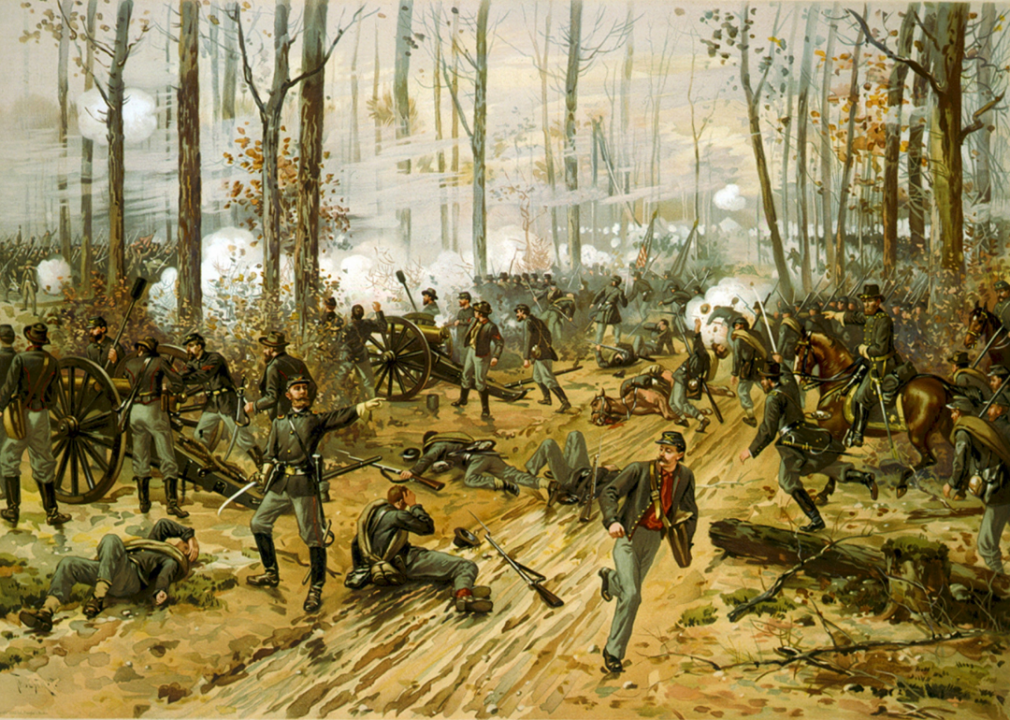
Universal History Archive/UIG // Getty images
Then: Pittsburg Landing, Tennessee (1862)
The Battle of Shiloh, also called the Battle of Pittsburg Landing, was the first major conflict on the Western Front of the Civil War. It started when the Confederacy launched a surprise attack on Union forces in Southwestern Tennessee. Although the North won the day, both sides suffered appalling casualties—more than 23,000 in total—and the magnitude of the violence shocked the nation on both sides of the conflict.
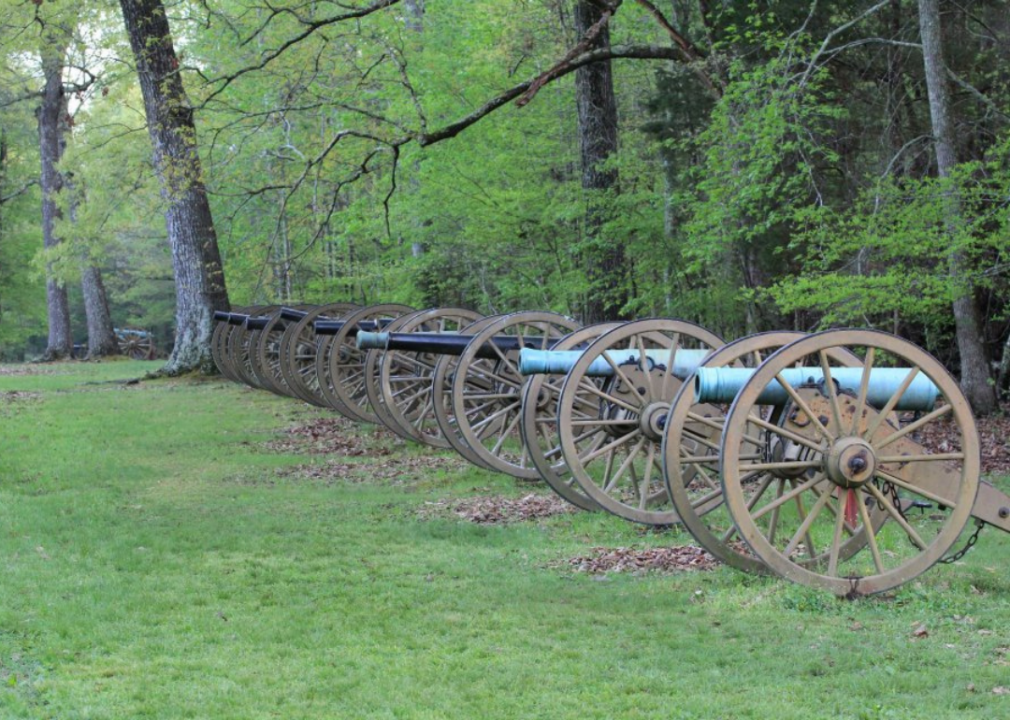
Shiloh National Military Park // Wikimedia Commons
Now: Pittsburg Landing, Tennessee
Pittsburg Landing remains an important river docking area, just as it was before the Civil War, but ever since 1862, it has been forever synonymous with the horrors of Shiloh. The Shiloh battlefield, which is maintained by the National Park Service, is just one of the many memorials and museums dedicated to the battle and the war.
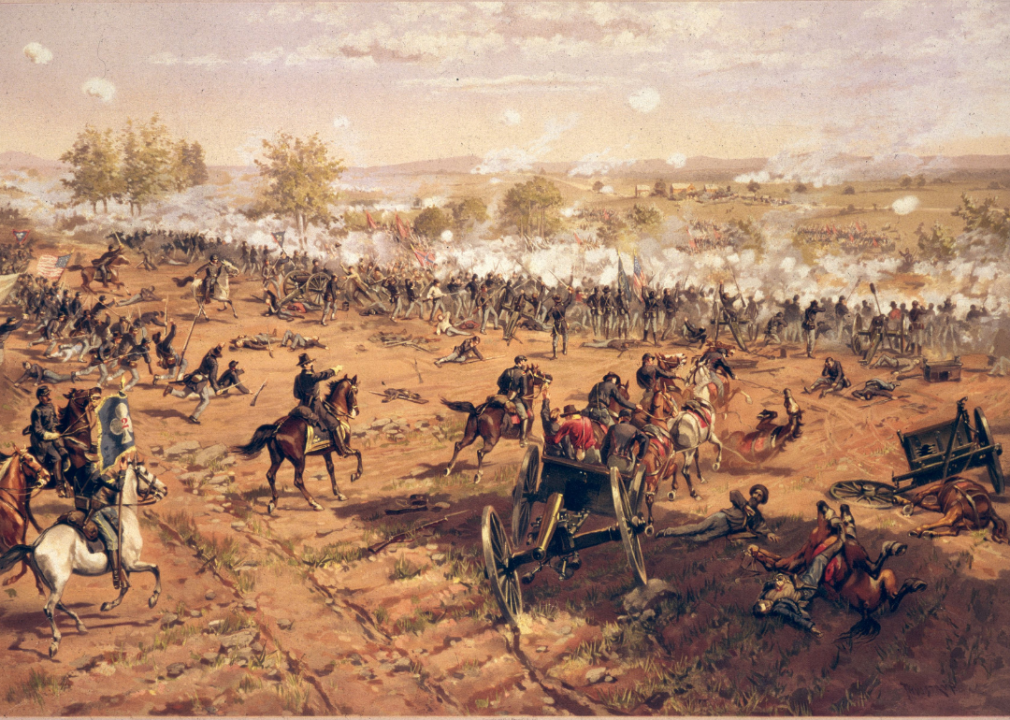
MPI // Getty Images
Then: Gettysburg, Pennsylvania (1863)
For three days in early July 1863, Union and Confederate soldiers squared off in and around Gettysburg, Pennsylvania, in one of the most infamous battles of not just the Civil War, but all of U.S. military history. The bloodiest Civil War battle in terms of total casualties, the Battle of Gettysburg—and the Union victory it produced—represented Robert E. Lee’s final offensive push into Northern territory and the beginning of the end for the Confederacy. The moment was immortalized by Abraham Lincoln’s famous Gettysburg Address.
You may also like: Defining historical moments from the year you were born
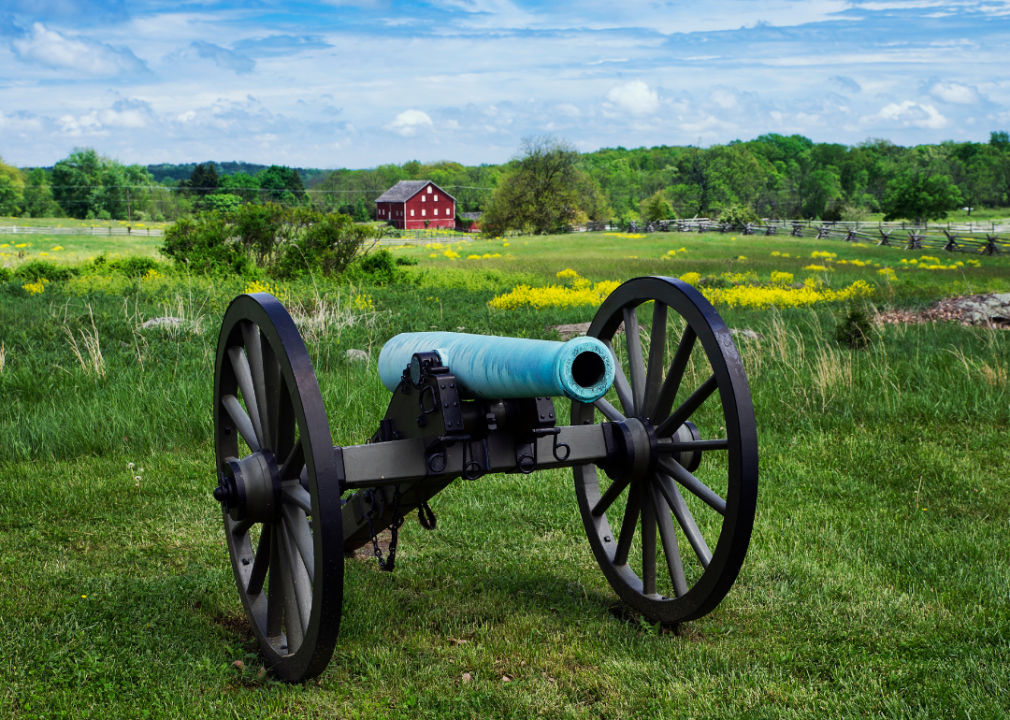
John Greim/LightRocket // Getty Images
Now: Gettysburg, Pennsylvania
Although about 1 million visitors still tour the Gettysburg battlefield every year, between 2–6 million annual visitors made the pilgrimage back at its peak in the 1960s and ’70s. The National Park Service operates Gettysburg National Military Park, which offers tours and educational programs of all kinds—including, fittingly enough, then-and-now tours. The surrounding town is a quaint and charming community with a thriving hospitality industry that caters to curious visitors from around the world.
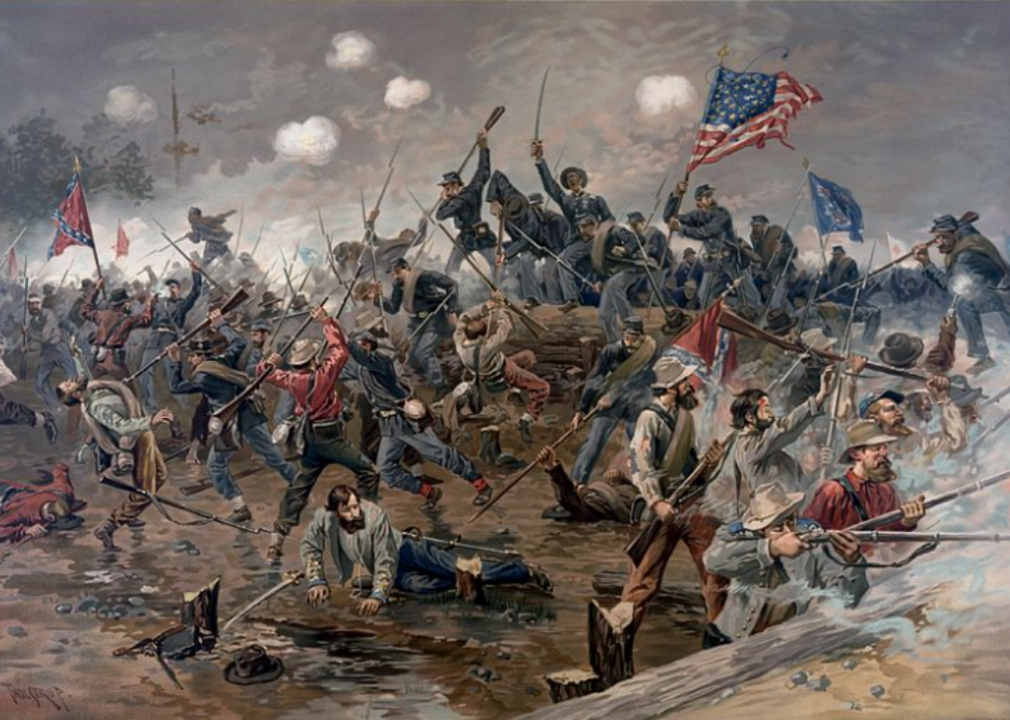
Library of Congress
Then: Spotsylvania, Virginia (1864)
The Battle of Spotsylvania—sometimes called the Battle of Spotsylvania Courthouse—was an epic but inconclusive showdown between generals Robert E. Lee and Ulysses S. Grant. 100,000 Union soldiers faced off against a Confederate force of roughly half that size in the rugged Virginia wilds in the wake of the also brutal but inconclusive Battle of the Wilderness. The battle tallied roughly 30,000 casualties—about 18,000 Union and 12,000 Confederate.
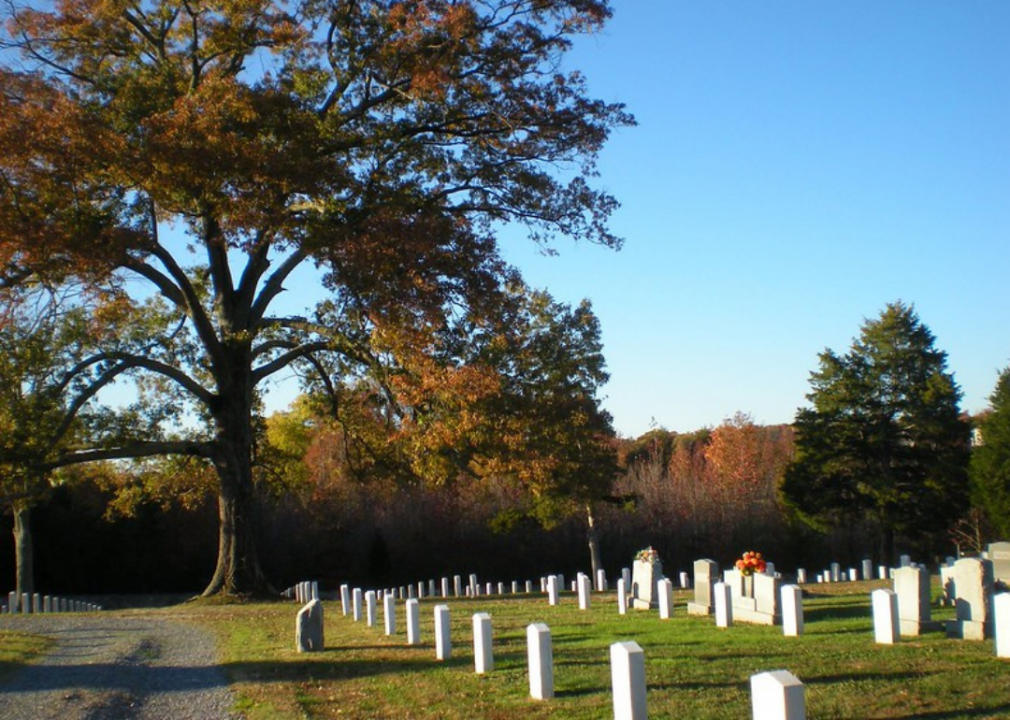
Auni Husted // Flickr
Now: Spotsylvania, Virginia
The Civil War still looms large over Spotsylvania and that part of Virginia in general. The town has taken in millions in tourism dollars since then. Although not all of that went to the war cemeteries, battlefield museums, and monuments dedicated to the conflict, much of it certainly did.
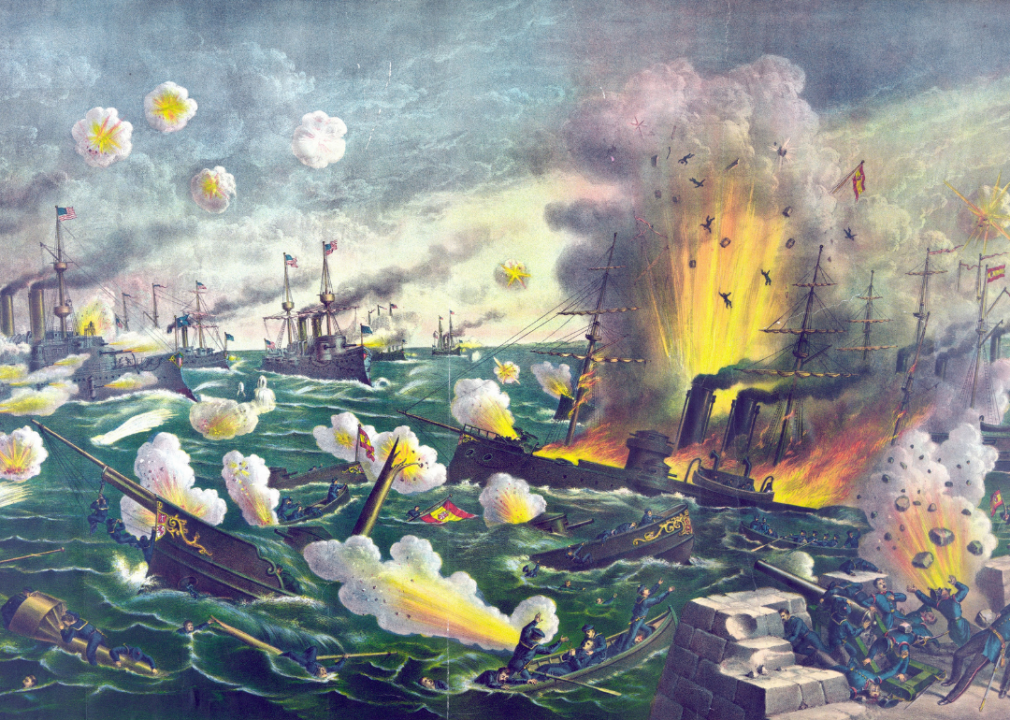
Photo12 // Getty Images
Then: Manila Bay, Philippines (1898)
Although nearby Cuba was the center of the hostilities that started the Spanish-American War, much of the fighting took place on the other side of the world. At the start of the war, Commodore George Dewey destroyed the entire Spanish fleet anchored in the Philippines during the Battle of Manila Bay in less than two hours. The lopsided victory foreshadowed the war as a whole, which the United States easily won, grabbing Guam, Puerto Rico, Cuba, and the Philippines for America, which was now officially an imperial world power.
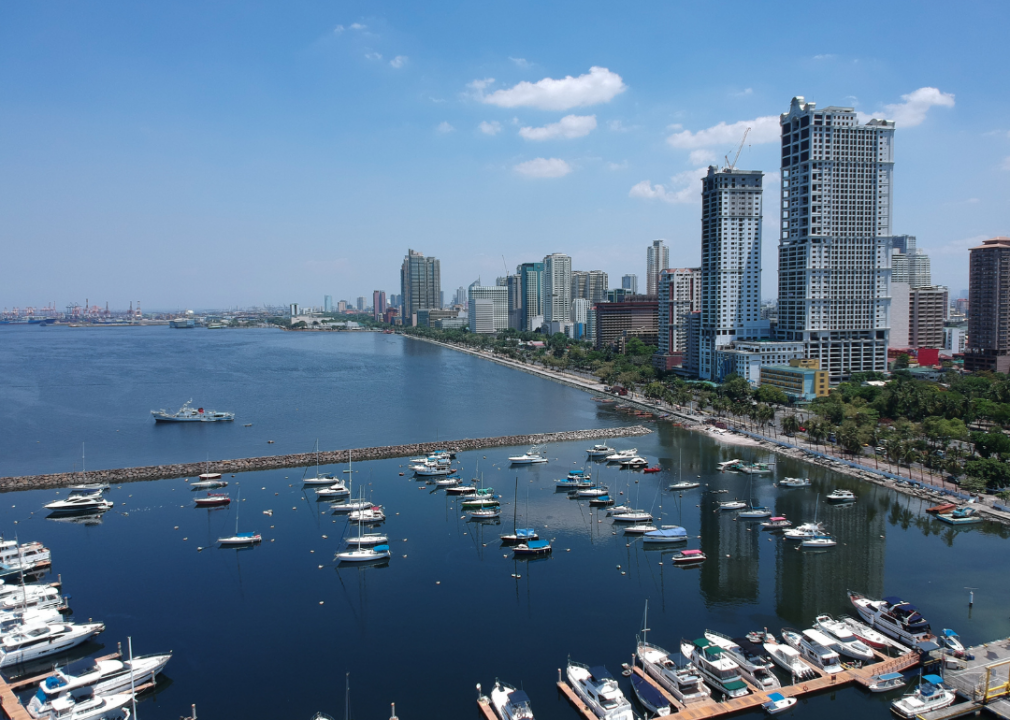
Kateryna.Sokolova // Shutterstock
Now: Manila Bay, Philippines
Rich in both resources and biodiversity, Manila Bay is a tourist hotspot that serves as a harbor for one of the most bustling capital cities in Southeast Asia. After hundreds of years of Spanish colonization, then a brief period of often-brutal U.S. rule, the Japanese conquered the island nation until its own defeat in World War II. Today, the Philippines is an independent republic.
You may also like: 25 terms you should know to understand the gun control debate
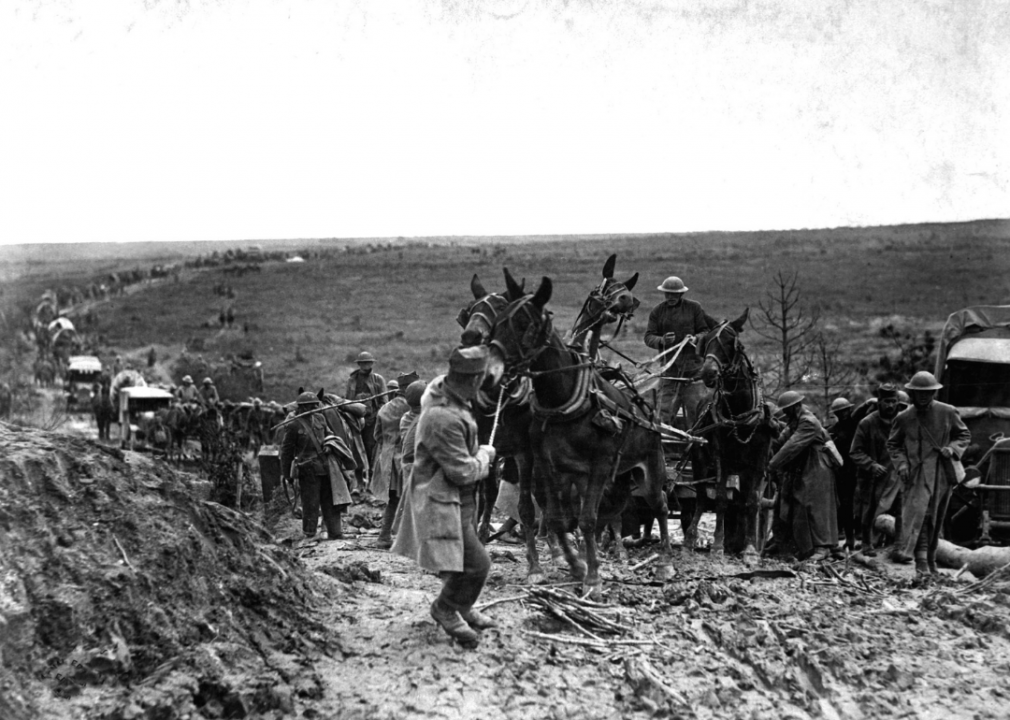
Everett Collection // Shutterstock
Then: Saint-Mihiel, France (1918)
In 1918, World War I had been raging for four years, but the United States had just entered the fray and the Battle of Saint-Mihiel was the first large-scale combat operation led by American forces. The green, but well-fed, well-equipped U.S. First Army emerged victorious against their battle-hardened German opponents in a contest that involved giants like Gen. John J. Pershing, Lt. Col. George Patton, and German Gen. Erich Ludendorff. Aside from playing a major role in the outcome of the war, the battle also stands out as being the first major operation for the brand new U.S. Army Air Corps, the predecessor of the Air Force.
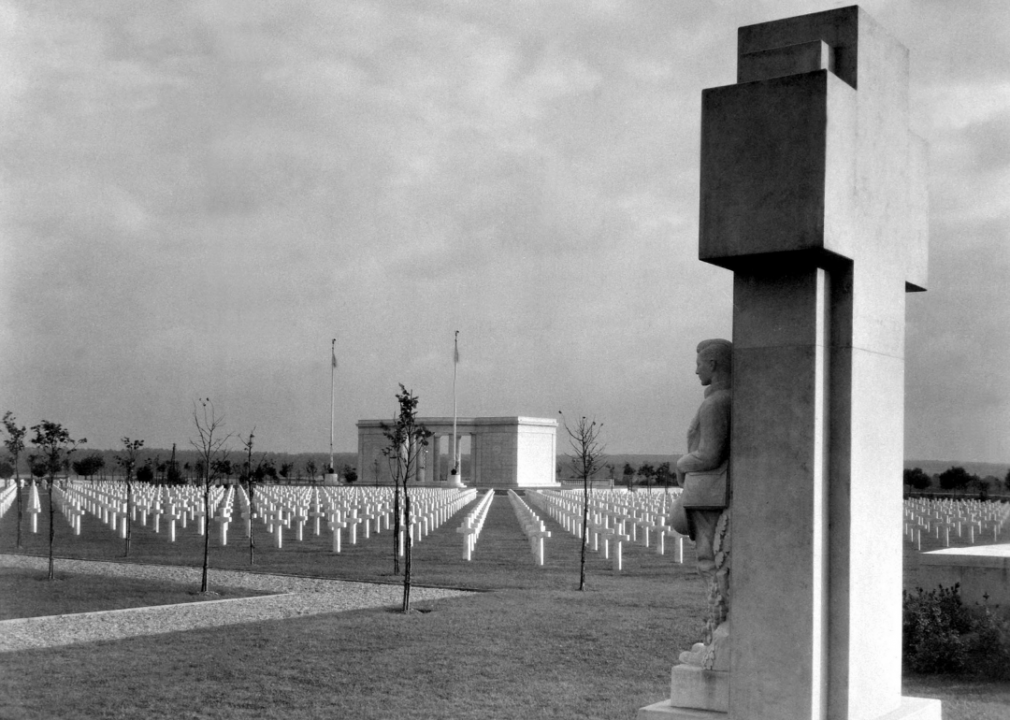
Everett Collection // Shutterstock
Now: Saint-Mihiel, France
St. Mihiel American Cemetery and Memorial now stands as a monument to the battle that unfolded there more than a century before. It contains the remains of 4,153 U.S. service personnel, most of whom died at the battle itself, which was waged to protect Paris as it became more and more vulnerable to a German attack.
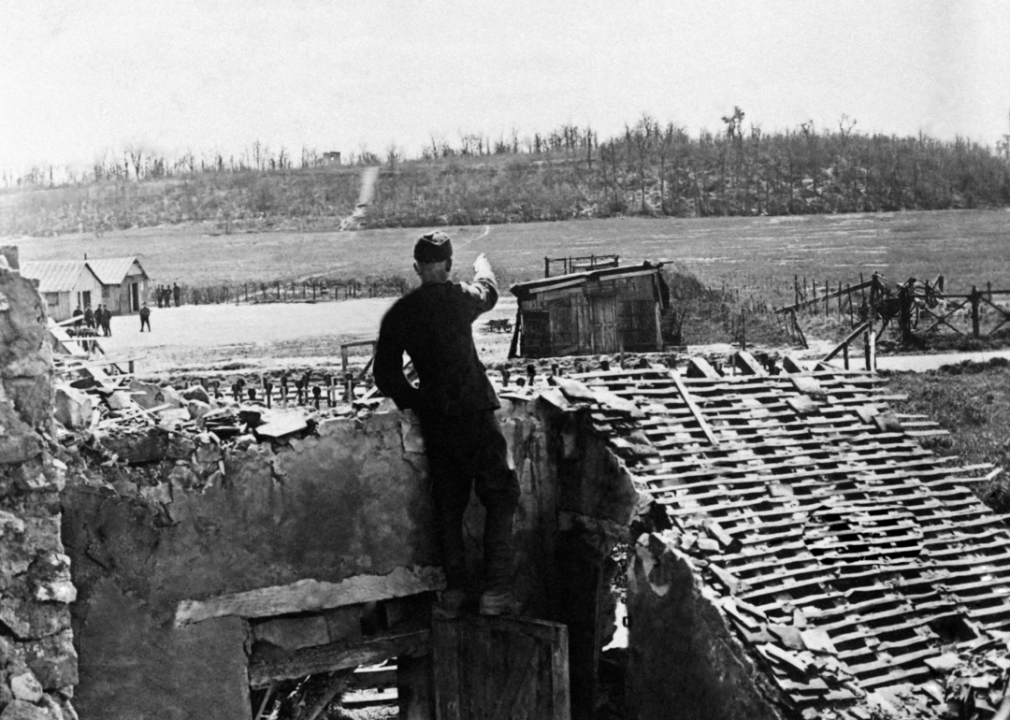
Keystone-France // Getty Images
Then: Belleau Wood, France
The Battle of Belleau Wood during World War I holds a deep significance in the annals of Marine Corps lore—their ferocious aggression there earned them the nickname Devil Dogs. French and British forces joined the Marines in Belleau Wood near the Marne River in a battle that pitted them against a German enemy invigorated and reinforced after the Russians surrendered in the East. The German advance toward Paris, however, ran into a brick wall at Belleau Wood in the form of the United States Marine Corps.
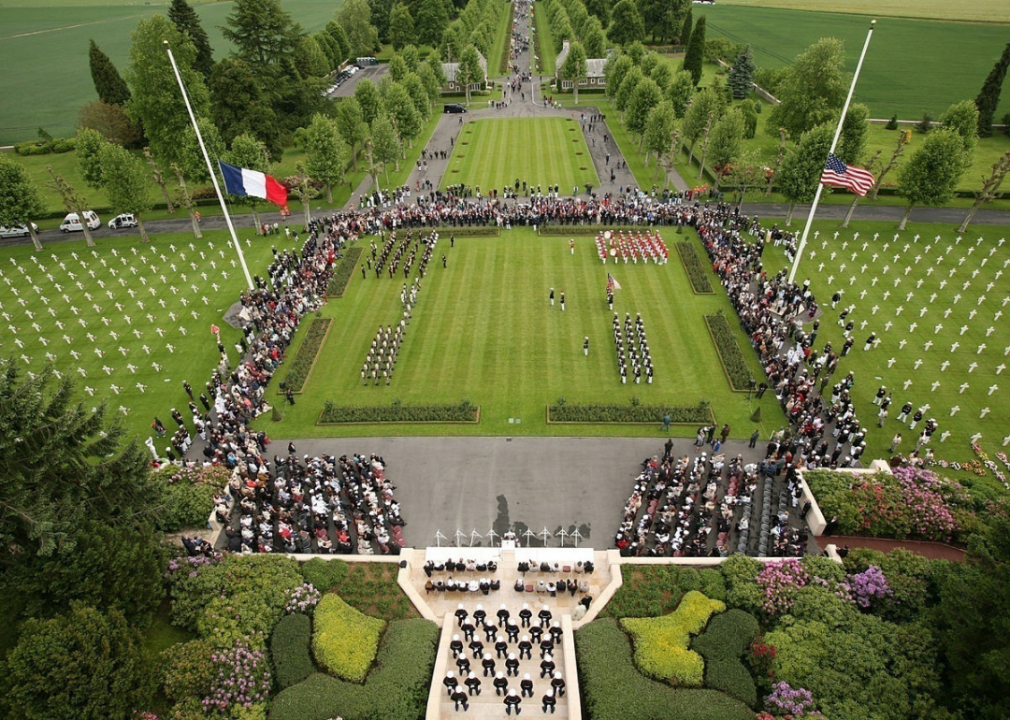
U.S. 1st Marine Division Public Affairs Office // Wikimedia Commons
Now: Belleau Wood, France
The French were so enamored with the Marines’ valor and courage that the French military officially renamed Belleau Wood as “Wood of the Marine Brigade.” Today, it’s the site of a U.S. military cemetery and memorial dedicated to those who fought and died there to liberate France and greater Europe.
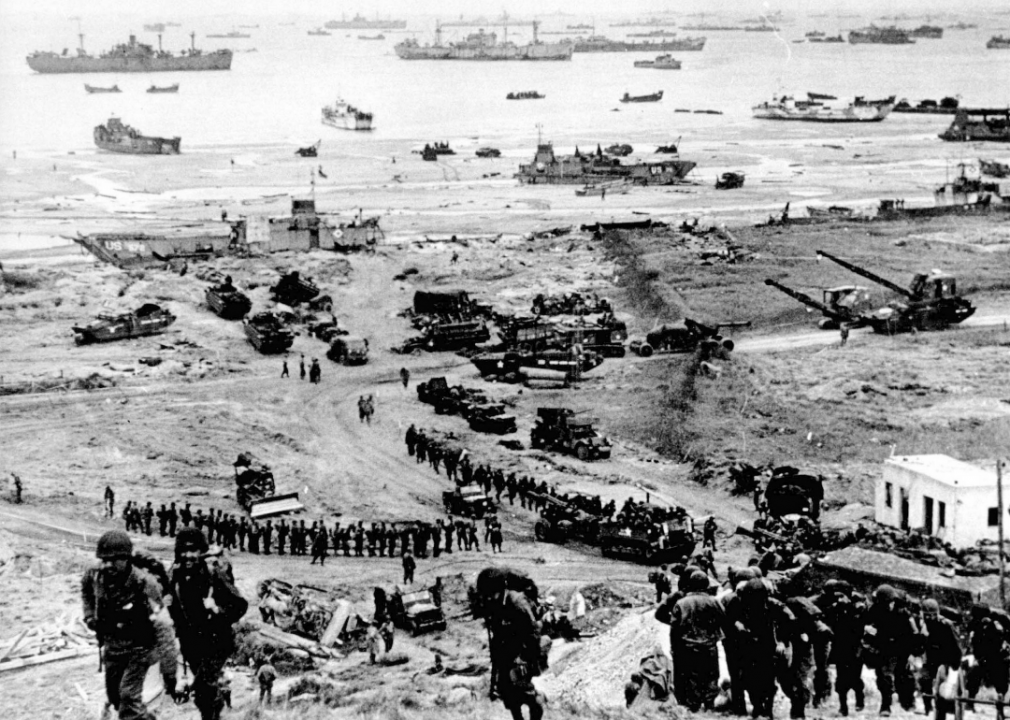
Universal History Archive // Getty Images
Then: Normandy, France (1944)
Just as Gettysburg was for Robert E. Lee and the Confederacy, the D-Day invasion of Normandy in German-occupied France was the beginning of the end for Adolph Hitler’s Nazis and one of the key turning points in World War II. On June 6, 1944, the largest amphibious assault in human history—code-named Operation Overlord—dislodged a network of entrenched German defenses as more than 150,000 Allied service members stormed beaches nicknamed Juno, Gold, Sword, Utah, and, most infamously, Omaha Beach.
You may also like: Most and least popular governors in America
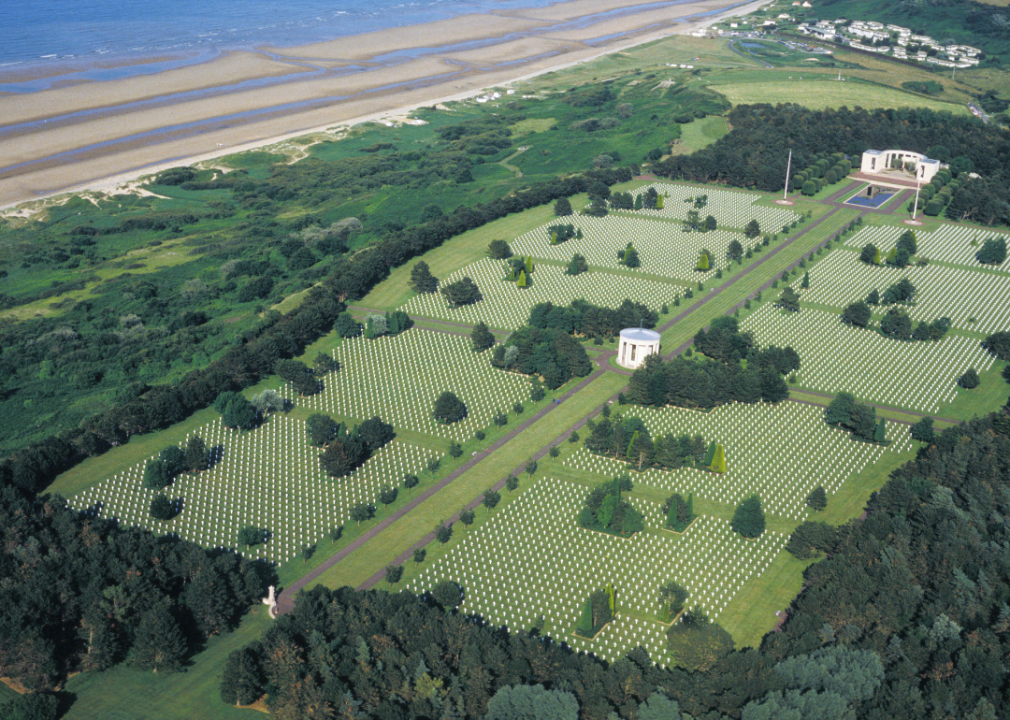
François BIBAL // Getty Images
Now: Normandy, France
The Normandy American Cemetery and Memorial in France is one of several solemn memorials that continue to draw tourists to the place where the carnage of D-Day unfolded more than three-quarters of a century ago. The region, however, is also a beach destination, and it’s common to see locals and visitors alike flocking to the surf, sand, and sun of the English Channel beaches there. It’s not uncommon for beachgoers to sunbathe, stroll, and dine right next to bunkers, entrenchments, utility roads, and other permanent reminders of the gruesome battle that unfolded there in the waning days of World War II.
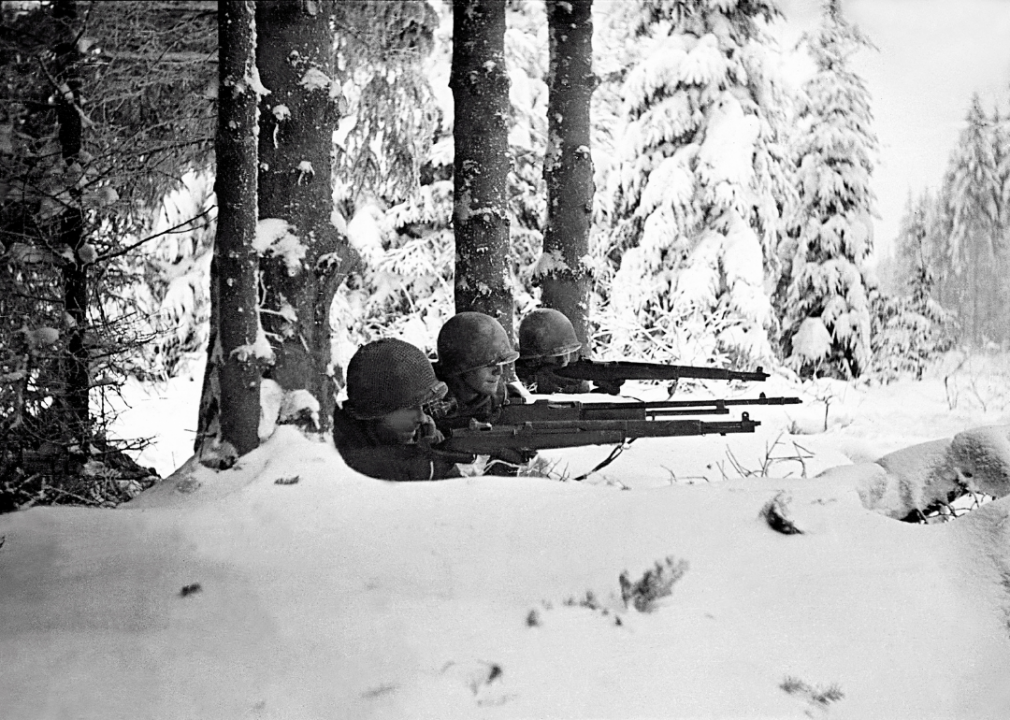
Tony Vaccaro // Getty Images
Then: Ardennes, Belgium (1944-45)
The Battle of the Bulge was Germany’s last major offensive on the Western Front during World War II—and it was an enormous campaign in scope, significance, and endurance. Both the winter weather and the fighting were brutal during 16 weeks of battle in the densely wooded Ardennes forest, where the cold alone was responsible for tens of thousands of casualties. In all, the U.S. suffered more than 100,000 casualties, making the Battle of the Bulge the costliest battle in Army history.
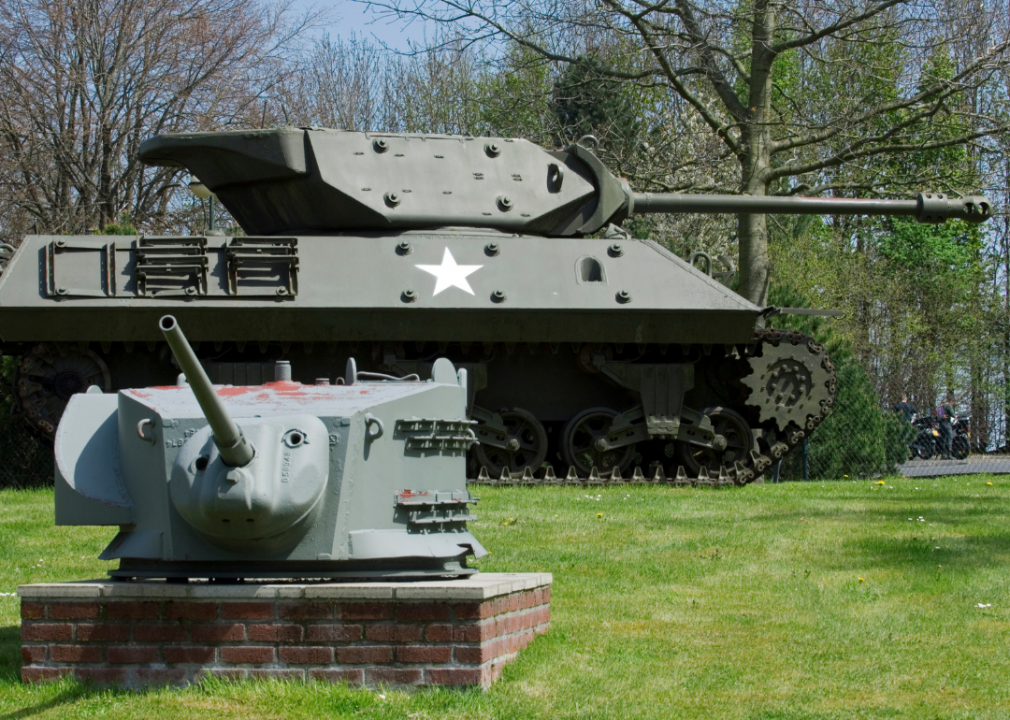
Arterra // Getty Images
Now: Ardennes, Belgium
Today in Ardennes, museums and memorials are scattered around the scene of where the slaughter took place, but if they weren’t there, visitors might never know they were walking on ground that, 75 years ago, was soaked in blood and littered with frozen corpses. Known for unspoiled nature, ancient cultural sites, and endless opportunities for outdoor activities, the Ardennes is home to sprawling forests, crystal clear lakes, and quaint villages.
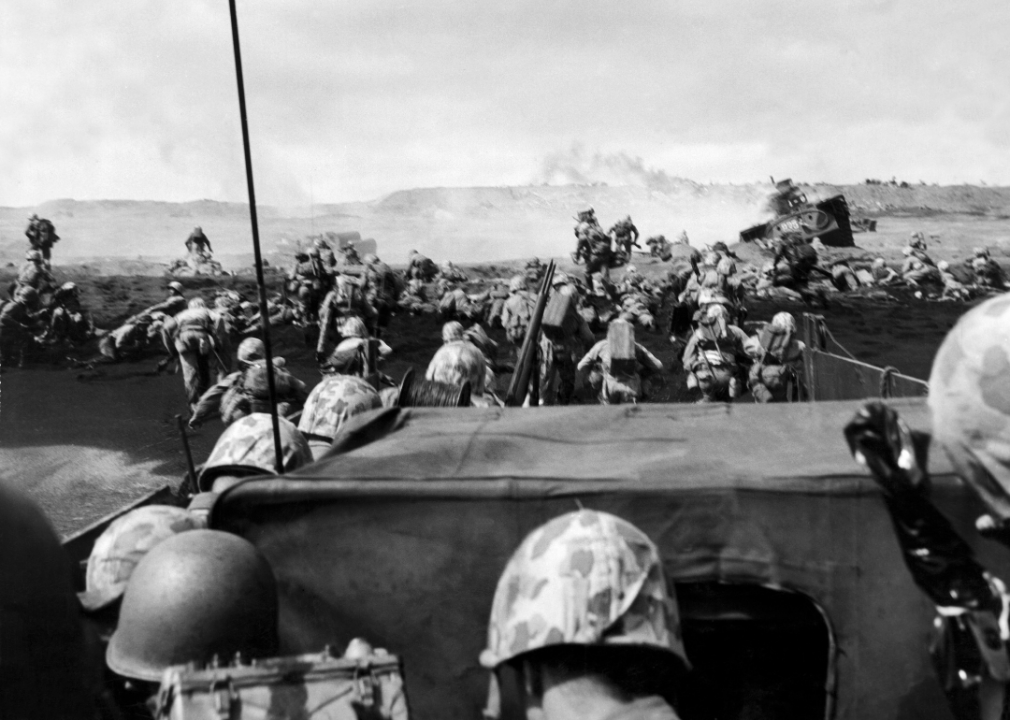
Underwood Archives // Getty Images
Then: Iwo Jima, Japan
One of the most epic battles in American military history, Iwo Jima will always be famous for the iconic photo of the raising of the American flag atop Mount Suribachi. It’s also famous for playing host to some of the most gruesome fightings of the war—by then, the Japanese were committed to fighting to the death and the Americans largely obliged them. Despite tens of thousands of casualties on both sides, the U.S. took only a few hundred Japanese prisoners.
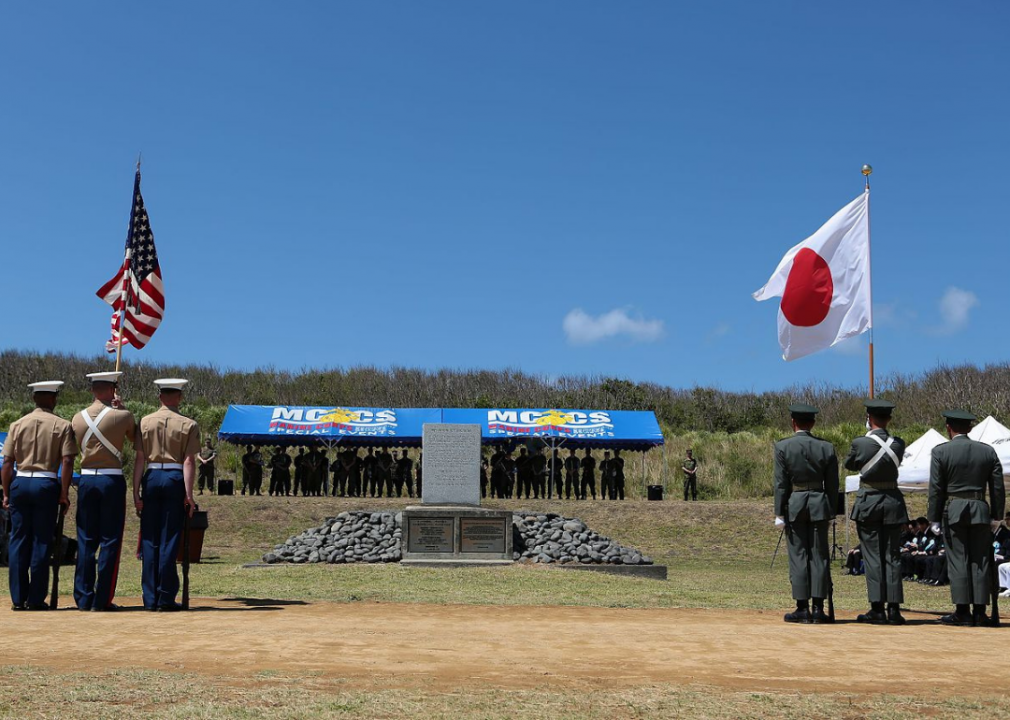
Lance Cpl. Juan Esqueda // Wikimedia Commons
Now: Iwo Jima, Japan
Iwo Jima is still a living monument to the carnage that unfolded there—it’s not uncommon for workers and visitors to uncover human remains. After the war, Mount Suribachi became a pilgrimage for many former G.I.s who returned there in droves to remember and to pay tribute to the past and to their fallen comrades.
You may also like: Oldest cities in America
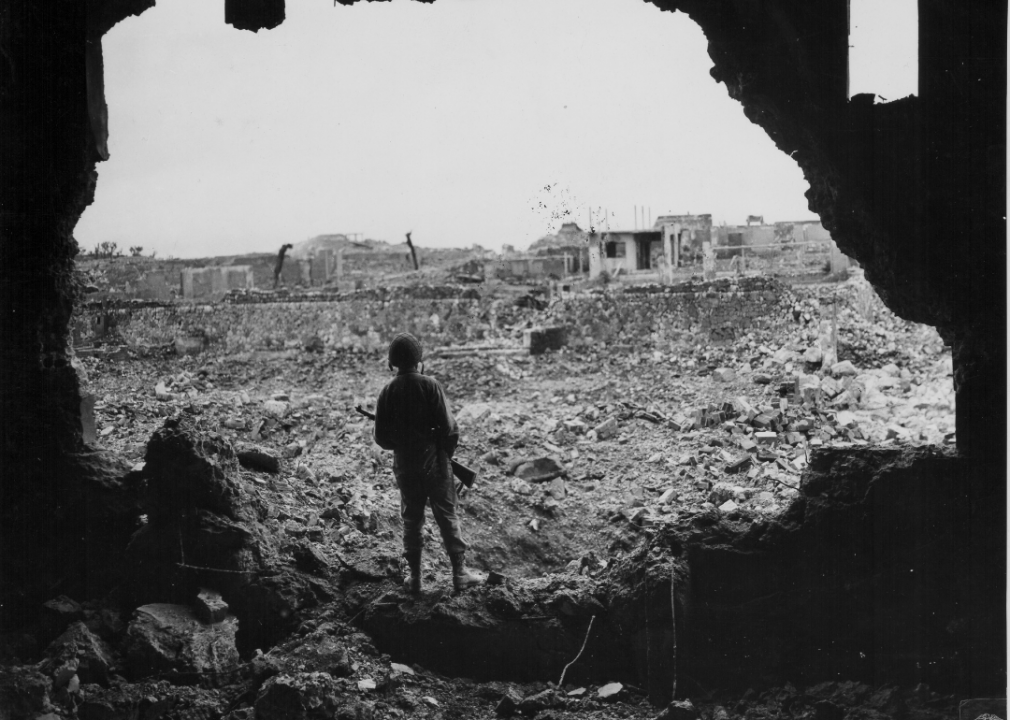
US Marine Corps // Getty Images
Then: Okinawa, Japan (1945)
Code-named Operation Iceberg, the Battle of Okinawa came on the heels of the largest amphibious invasion in the Pacific Theater and is remembered as one of the fiercest battles of World War II. It was defined by ferocious ground fighting, intense naval battles, kamikaze warfare, and hideous death counts among military personnel and civilians alike.
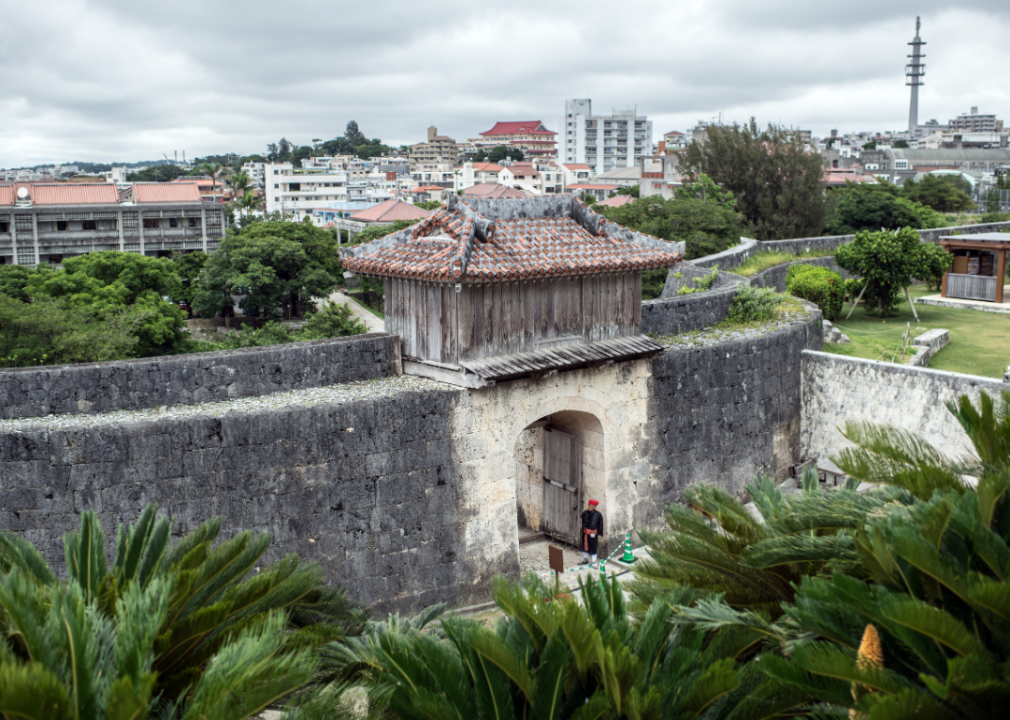
Carl Court // Getty Images)
Now: Okinawa, Japan
There’s still a massive American military presence on Okinawa today, although it’s part of a symbiotic partnership with modern Japan, not an occupying force. The beautiful and popular tourist destination is home to many memorials, monuments, and museums dedicated to the battle, the courage of the warriors on both sides, and to the plight of the hundreds of thousands of unfortunate civilians who were caught in the middle in 1945.
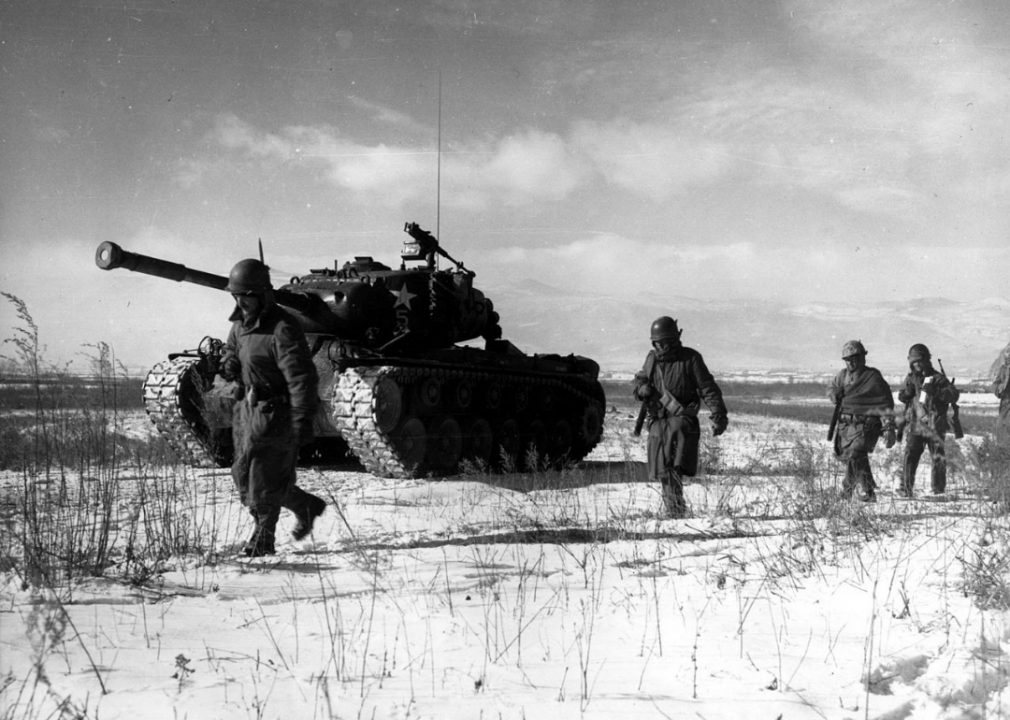
Corporal Peter McDonald/USMC // Wikimedia Commons
Then: Chosin Reservoir, North Korea (1950)
It’s hard to imagine that any troops in any battle ever suffered more terribly than the combatants at the Battle of Chosin Reservoir, which took place shortly after China entered the Korean War. A huge force of 150,000 Chinese attackers surprised and surrounded a much smaller contingent of U.S. and U.N. forces, which eventually were able to escape. The brutal and bitter day-and-night fighting lasted 17 days, but the real enemy was the weather—Chosin Reservoir is located in one of the coldest mountain regions on the planet and the battle was characterized by the terrible winter conditions that dealt misery to the freezing soldiers on both sides.
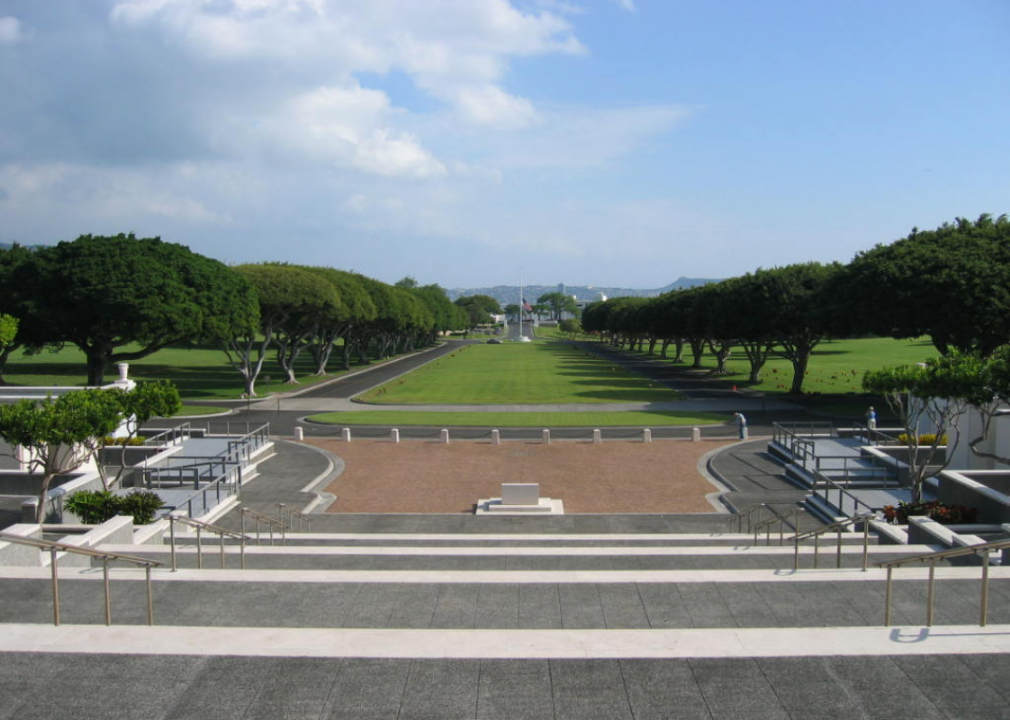
Jiang // Wikimedia Commons
Now: Changjin, North Korea
Today, the site of the Korean War carnage that took place at Chosin is located in present-day Changjin County in the South Hamgyŏng province of North Korea. That puts it in one of the most remote and inaccessible parts of one of the most secretive, reclusive, and closed countries in the world. It is unknown if any war memorial acknowledging the bloodshed exists in the frozen mountains there today.
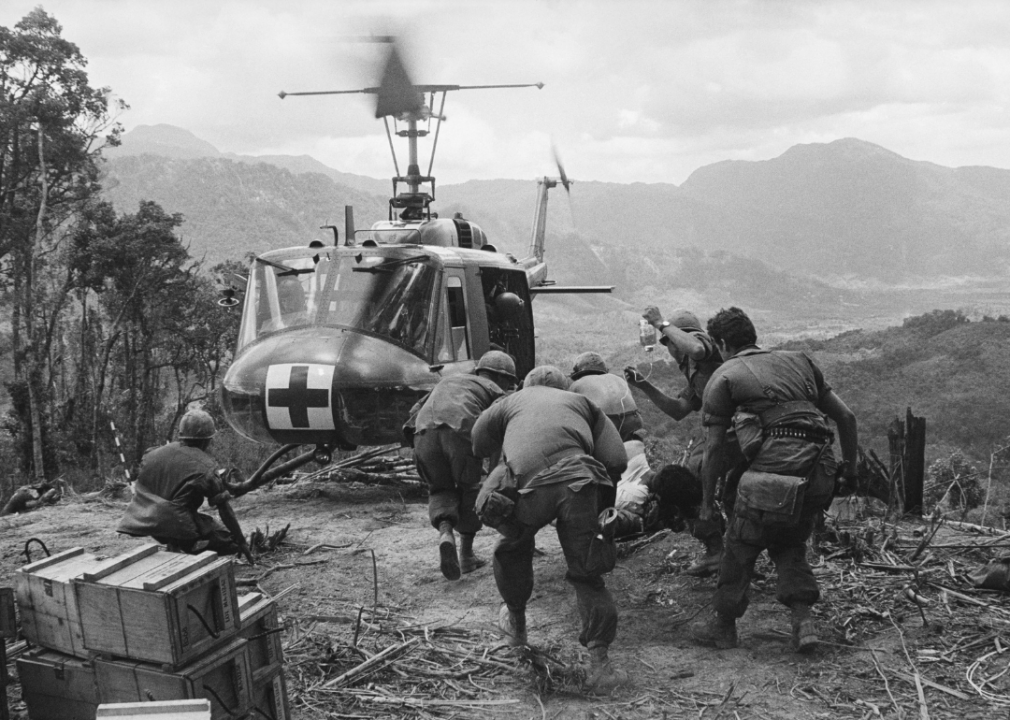
Bettmann // Getty Images
Then: A Shau Valley, Vietnam
In 1967, members of the U.S. Army, along with South Vietnamese forces, captured a heavily fortified elevated position known as Hill 937—but to those who suffered, struggled, and died to take it over 10 days of ruthless combat, it was known as Hamburger Hill. After more than 10 costly attacks against North Vietnamese front line troops, the Americans finally captured the strategically unimportant hill, only to abandon it just days later. The battle was one of the most controversial moments of the entire war both in the military and at home.
You may also like: Best-run cities in America
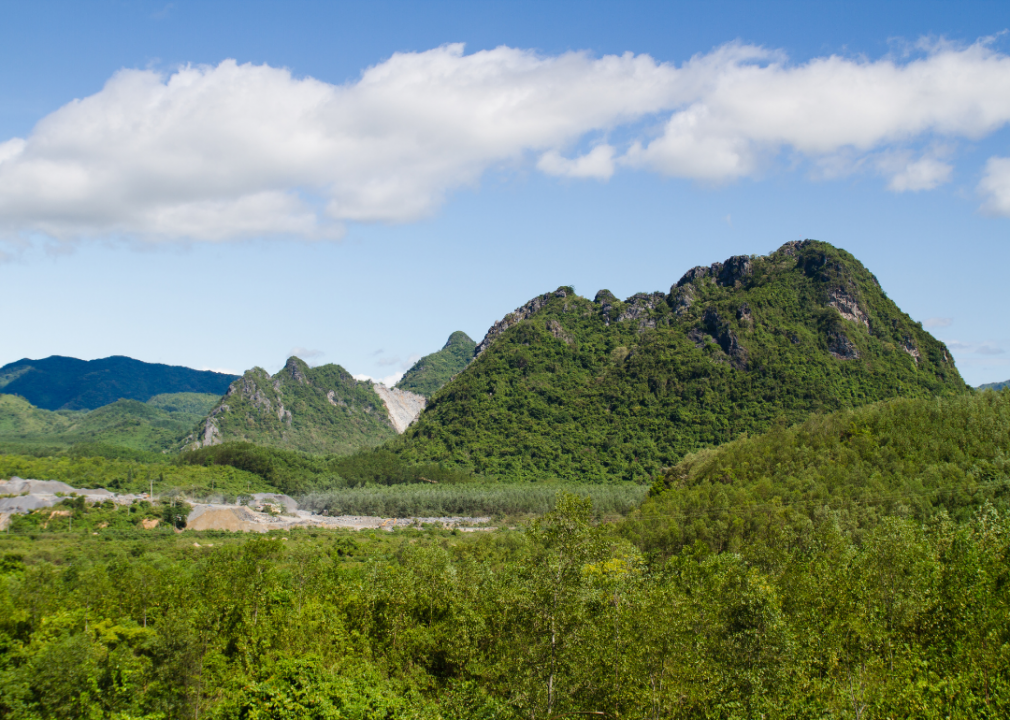
Milosz Maslanka // Shutterstock
Now: A Shau Valley, Vietnam
Located on the border of Laos and what was North Vietnam, the A Shau Valley is located in one of the most beautiful places on earth. The infamous Hamburger Hill is now home to many services offering tours of the battlefield and the surrounding landscape.
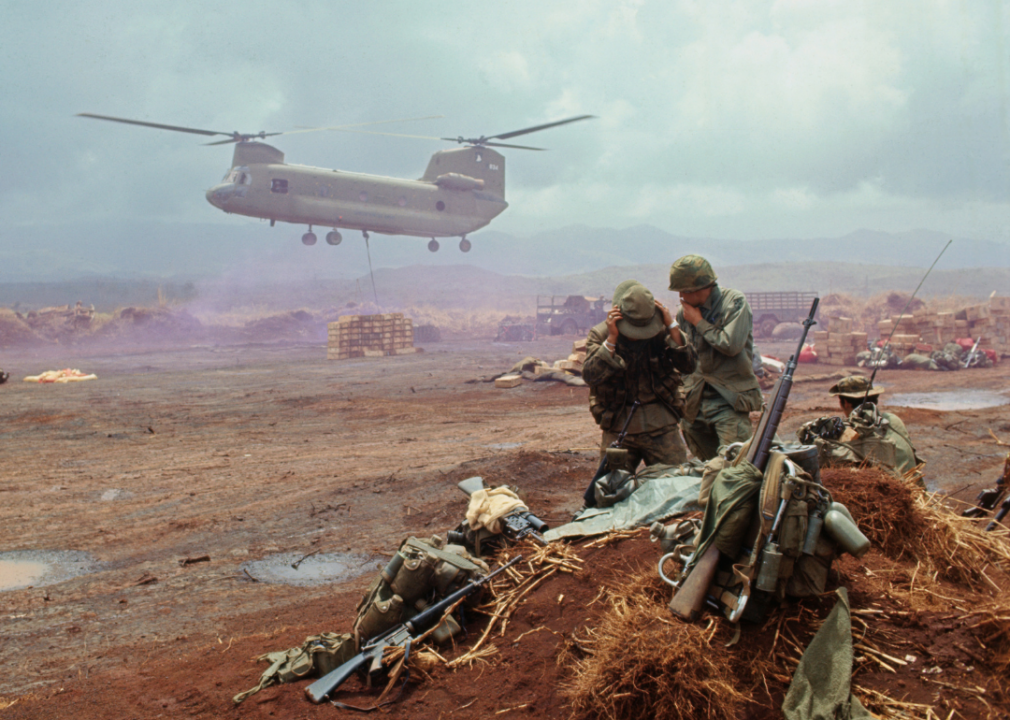
Bettmann // Getty Images
Then: Khe Sanh, Vietnam (1968)
By 1968, it was clear that North Vietnam was amassing its forces around Khe Sanh, which was located just south of the demilitarized border of the North and South. In early 1968, the amassed communist forces attacked a large Marine Corps combat base there and what ensued was one of the longest and bloodiest battles of the war, as well as one of the most controversial.
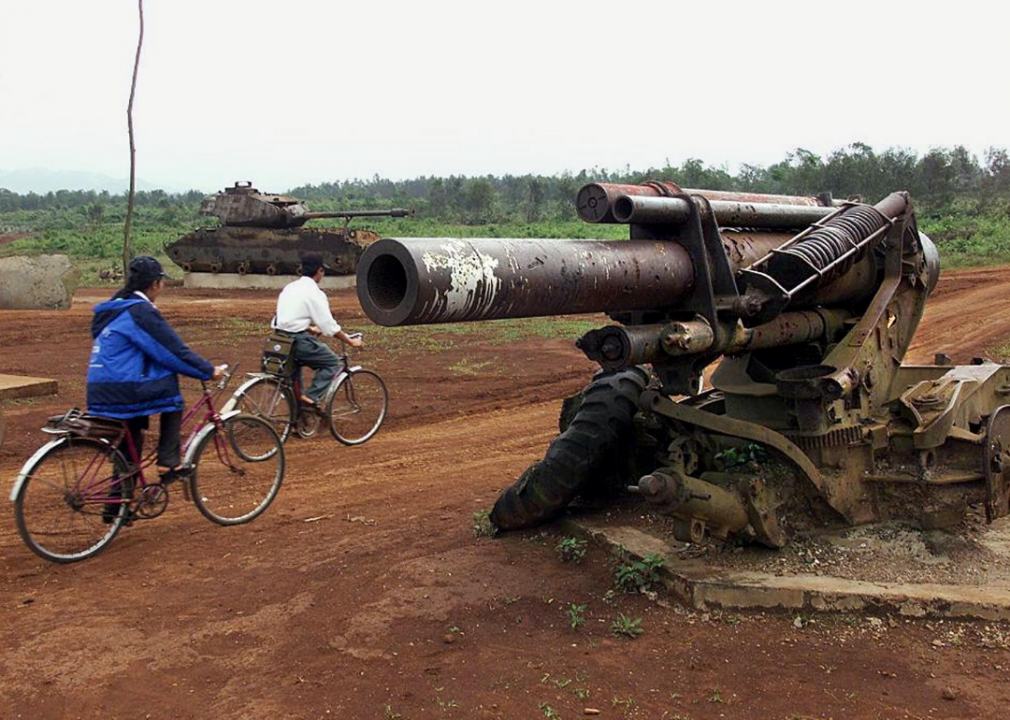
HOANG DINH NAM/AFP // Getty Images
Now: Khe Sanh, Vietnam
The shooting today at Khe Sanh takes place with cameras, not rifles. Now a tourist attraction and historical site, Khe Sanh is home to guided tours of the battlefield and a museum dedicated to the long-defunct Marine Corps combat base and the infamous events that transpired there.
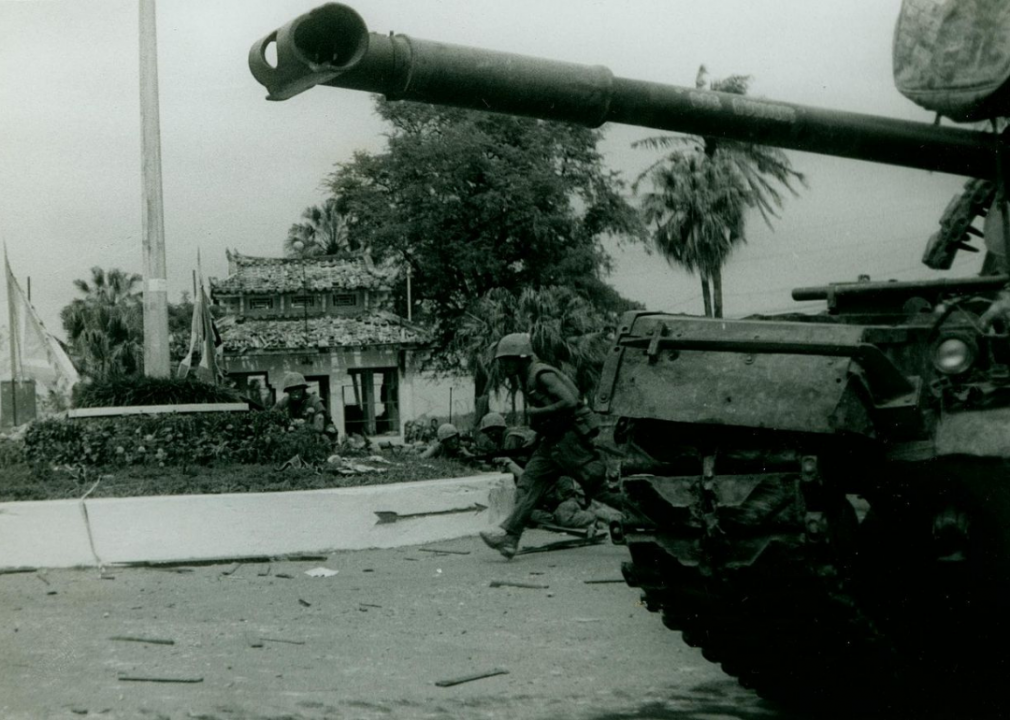
A. Parks/USMC // Wikimedia Commons
Then: Hue, Vietnam (1968)
One of the longest and most brutal campaigns of the Vietnam War, the Battle of Hue was part of North Vietnam’s nationwide Tet Offensive. Hue—like the whole of the Tet Offensive and the year 1968 in general—played a significant role in turning American popular opinion against the war. Communist forces initially took the city, which the United States and its South Vietnamese allies slowly reclaimed over the course of one month of intense and bloody combat.
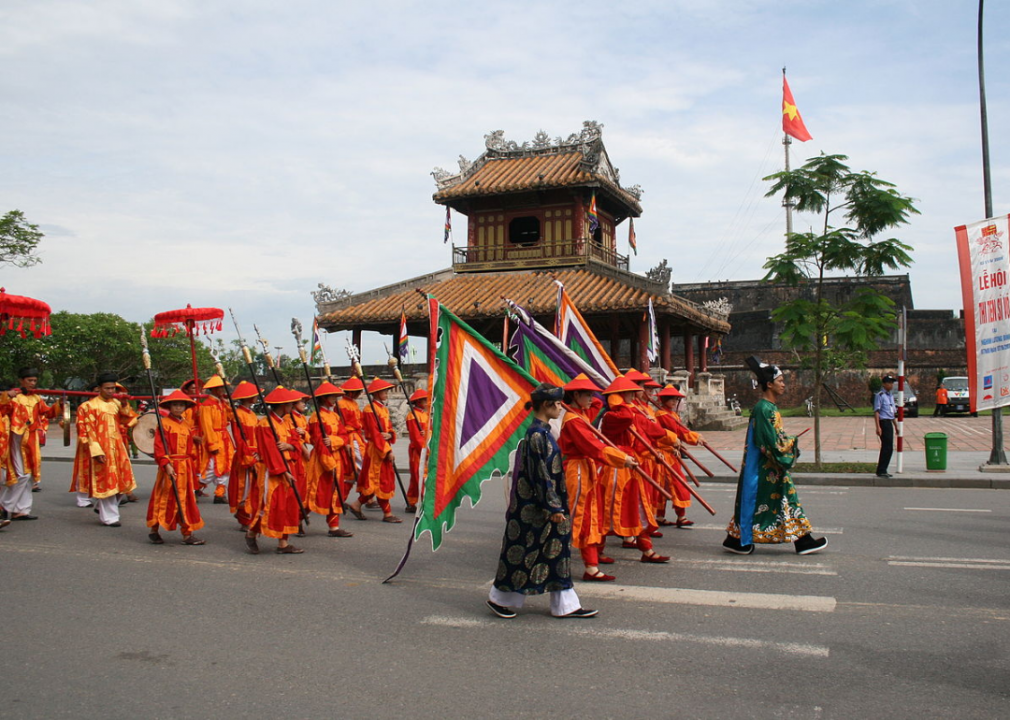
Lưu Ly // Wikimedia Commons
Now: Hue, Vietnam
Situated along the Perfume River, the city of Hue is now a major tourist attraction for people visiting Vietnam. Like so much of the country, Hue is known for its ancient historical significance, rich cultural heritage, and stunning natural beauty.
You may also like: US cities with the cleanest air
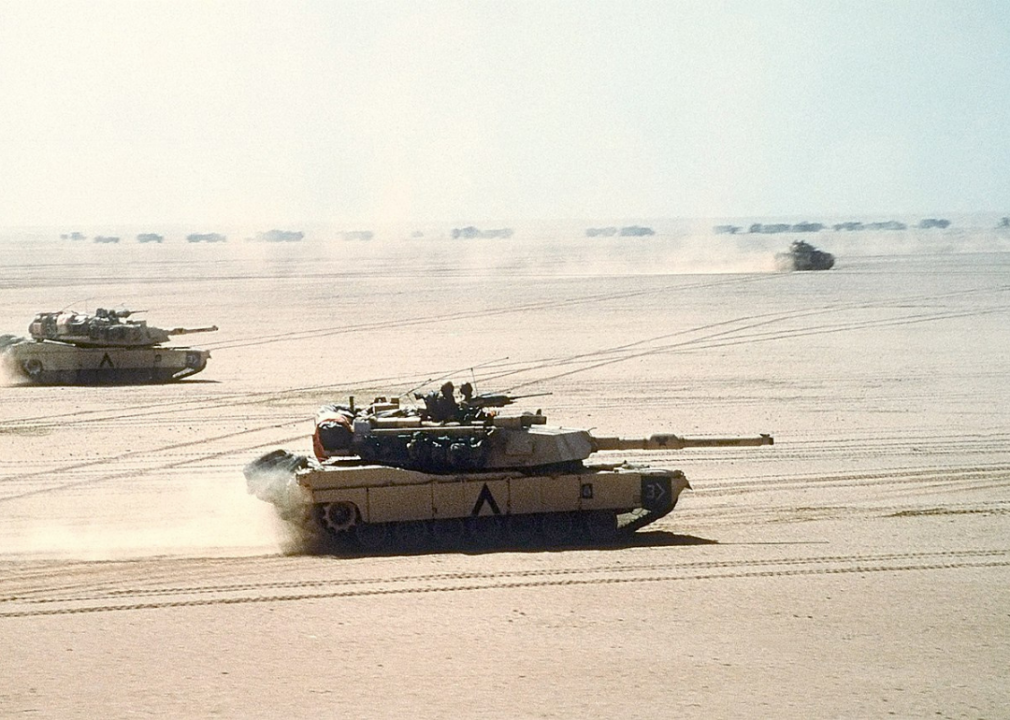
PHC D. W. HOLMES II/US Navy // Wikimedia Commons
Then: Basra, Iraq (1991)
On February 27, 1991, the American 1st Armored Division annihilated the 2nd Brigade of the Iraqi Republican Guard Medina Luminous Division in one of the most lopsided tank battles in history: the Battle of Medina Ridge. The American tanks—the deadliest and most sophisticated in the world—were supported by unchallenged air power on the battlefield just outside of Basra. They made light work of the battle-hardened, but ill-equipped Iraqis, who didn’t even know the Americans were there at first until their obsolete Chinese- and Soviet-made tanks began exploding.
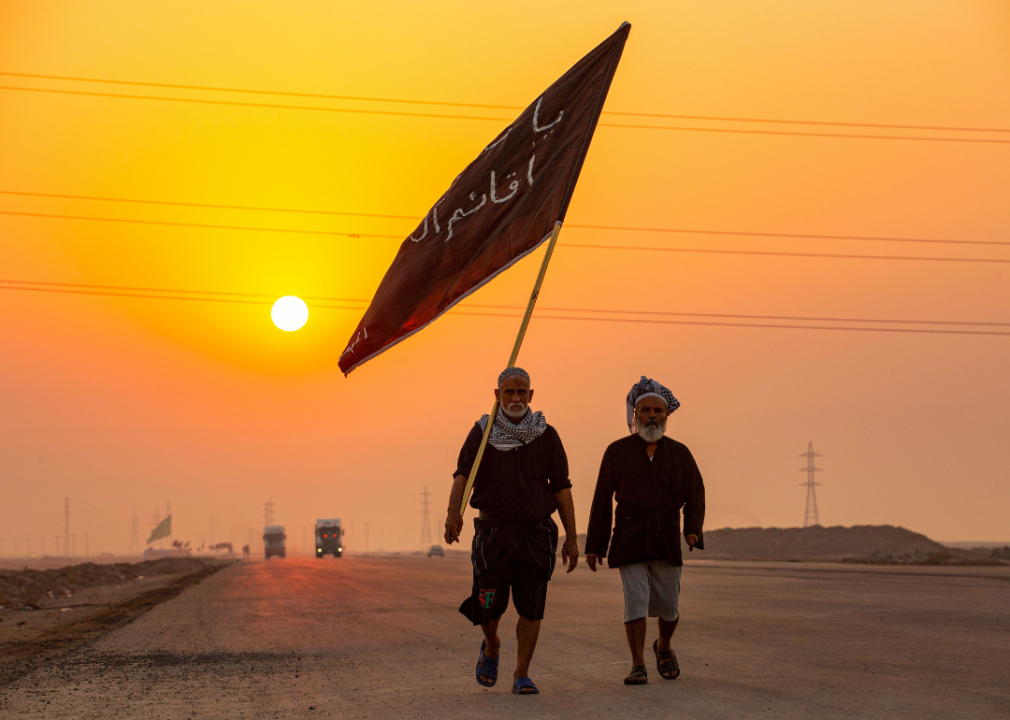
HUSSEIN FALEH/AFP // Getty Images
Now: Basra, Iraq
American tanks would be a familiar sight in Basra—one of the oldest and most important cities in the Islamic Middle East—long after the Battle of Medina Ridge. The U.S. launched a major offensive there in 2008 when it returned to Iraq to fight Saddam Hussein, once again. Today, it’s a hotbed of protest, popular uprising, political revolution, and most recently, violence and assassinations.
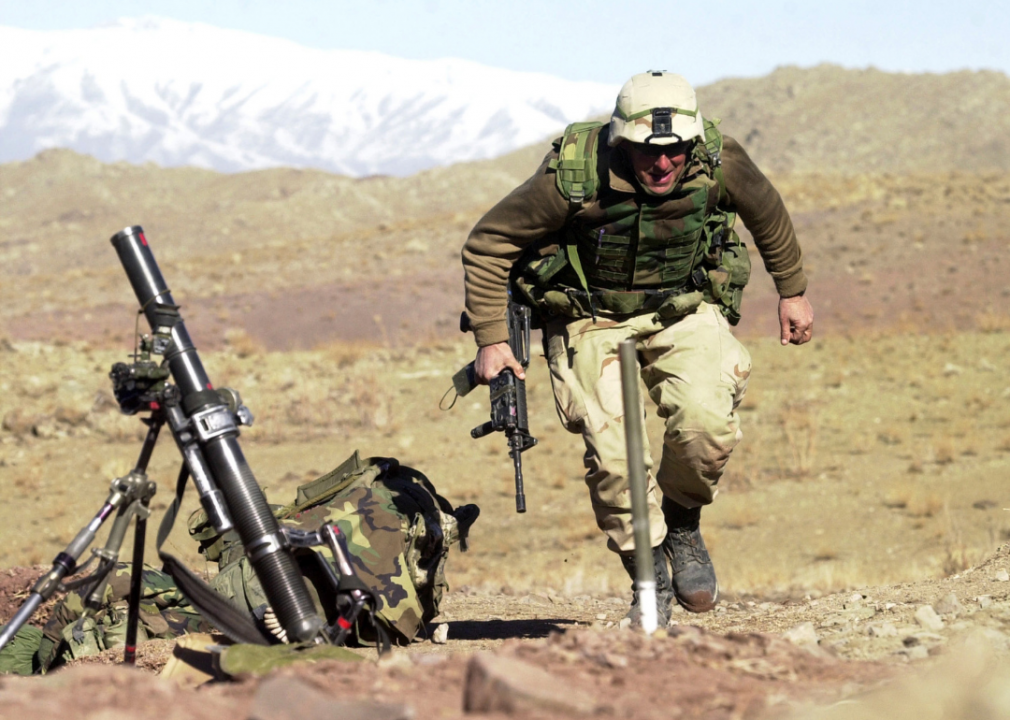
Warren Zinn/Army Times // Getty Images
Then: Takur Ghar, Afghanistan (2002)
The U.S. launched Operation Anaconda in 2002 to root out Taliban and al-Qaeda fighters in the remote and rugged Shahi-Kot Valley and Arma Mountains. There, a small but highly potent force of CIA paramilitary fighters and U.S. special forces personnel—including Navy SEALs, Delta operators, and Air Force Combat Controllers—engaged in a short but intense and deadly battle in freezing conditions on Takur Ghar Mountain.
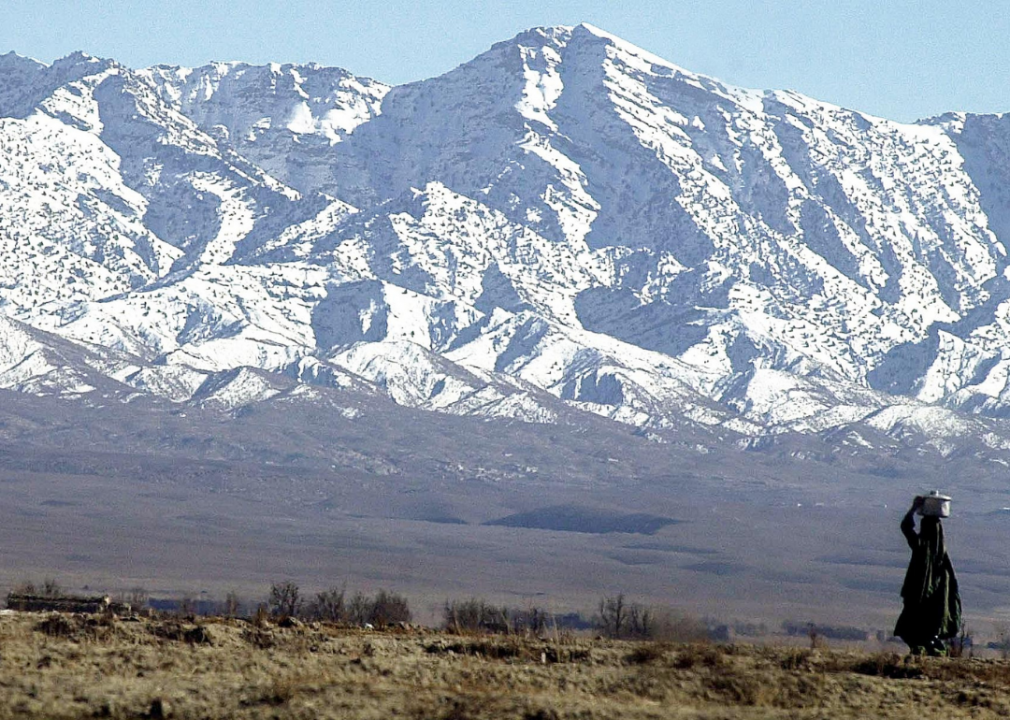
JEWEL SAMAD/AFP // Getty Images
Now: Takur Ghar, Afghanistan
Takur Ghar in the Arma Mountains is located in Afghanistan’s Zurmat District, which exists in 2020 much as it has for centuries. A tribal region in the rough and rugged mountains between Afghanistan and Pakistan—which many who live there consider to be an imaginary line drawn on a map—it is inhabited by fiercely independent and often violent tribesmen who live by strict local customs. To the U.S., Operation Anaconda was a climactic moment at the start of its longest war, but to the Zurmat locals, it was merely another case of yet another foreign superpower learning the hard way about the consequences of bringing armies into their mountains.
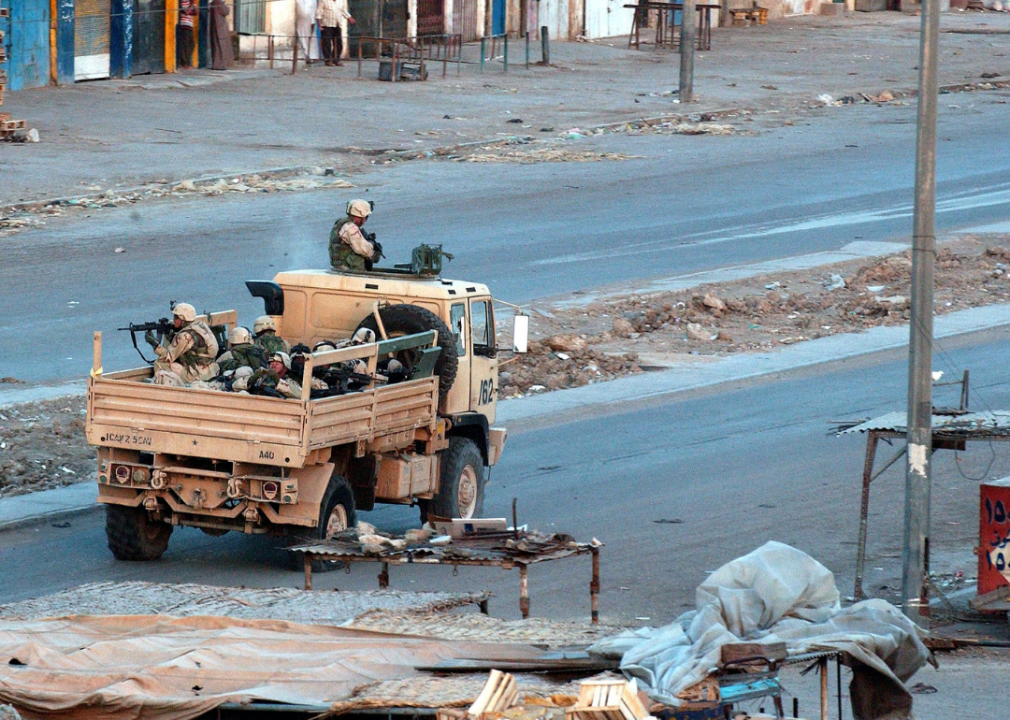
Wathiq Khuzaie // Getty Images
Then: Sadr City, Iraq (2004)
In 2004, a platoon of 18 U.S. soldiers was ambushed in a huge Baghdad slum of 2 million residents called Sadr City. Although the Americans thought they were on a peacekeeping mission, Moqtada al Sadr, the son of a prominent Shiite leader killed by Saddam Hussein, was leading a popular uprising against the American occupation. Known as Black Sunday, the ambush led to a siege that would last four years, and that involved intense periods of combat as the city changed hands back and forth.
You may also like: Oldest national parks in America
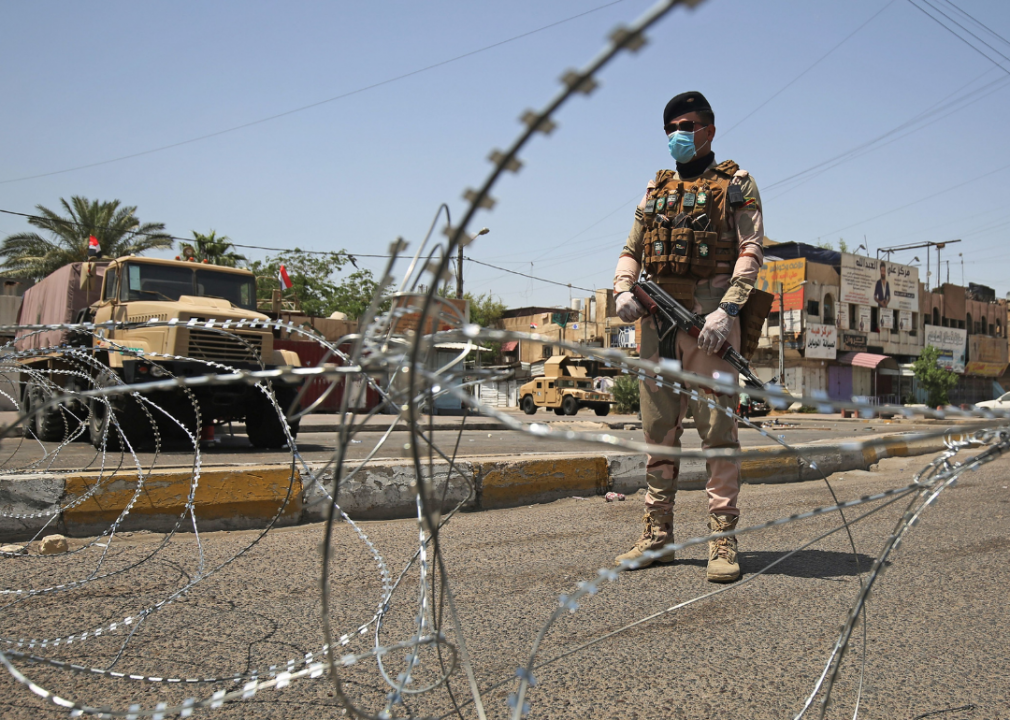
AHMAD AL-RUBAYE/AFP // Getty Images
Now: Sadr City, Iraq
Today, the Americans are gone from Sadr City, but Moqtada al-Sadr and his Sadrist Movement are still there—as is his well-armed militia. The region is still a hotbed of political activity and frequent violence as many factions in the once-unified Shia stronghold have splintered into smaller groups that are often at odds with each other.
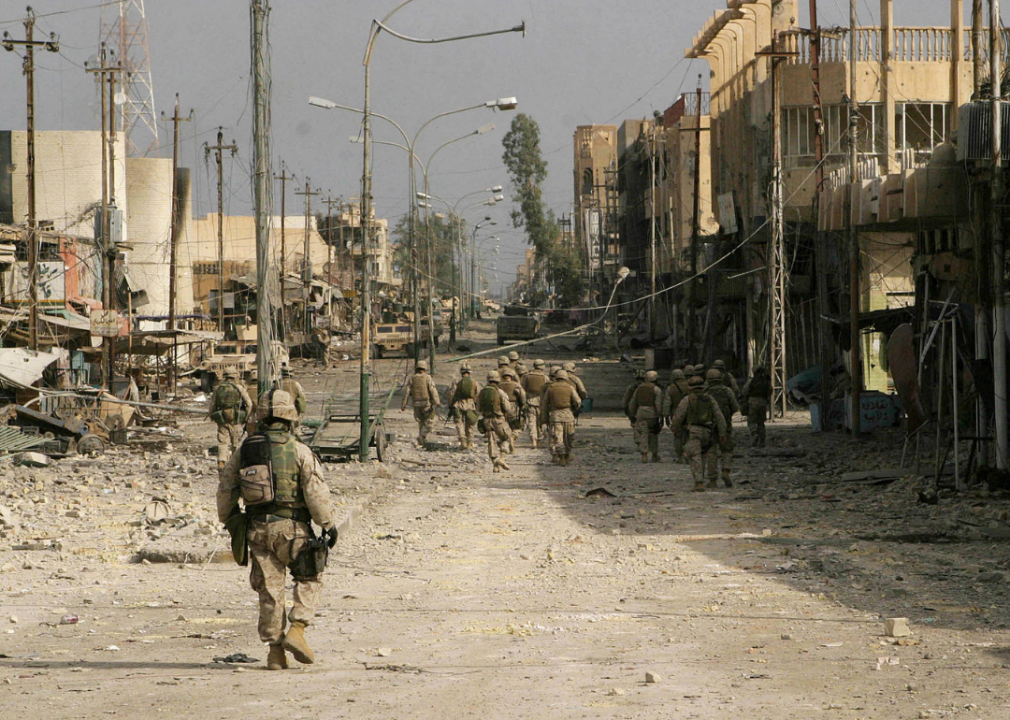
AFP // Getty Images
Then: Fallujah, Iraq (2004)
For the Marines, the Second Battle of Fallujah was the bloodiest endeavor since the siege of the city of Hue in Vietnam in 1968 and it was the deadliest battle across all branches of the entire War in Iraq. The Army and Marines joined their British and Iraqi allies in attempting to uproot an alliance of insurgents who were entrenched in Fallujah, one of the most hostile and dangerous cities in the country. Characterized by brutal and intense close-quarters fighting in a city nearly devoid of civilians—one of the few bright spots—the battle left more than 100 U.S. coalition forces and more than 1,000 Iraqis dead.
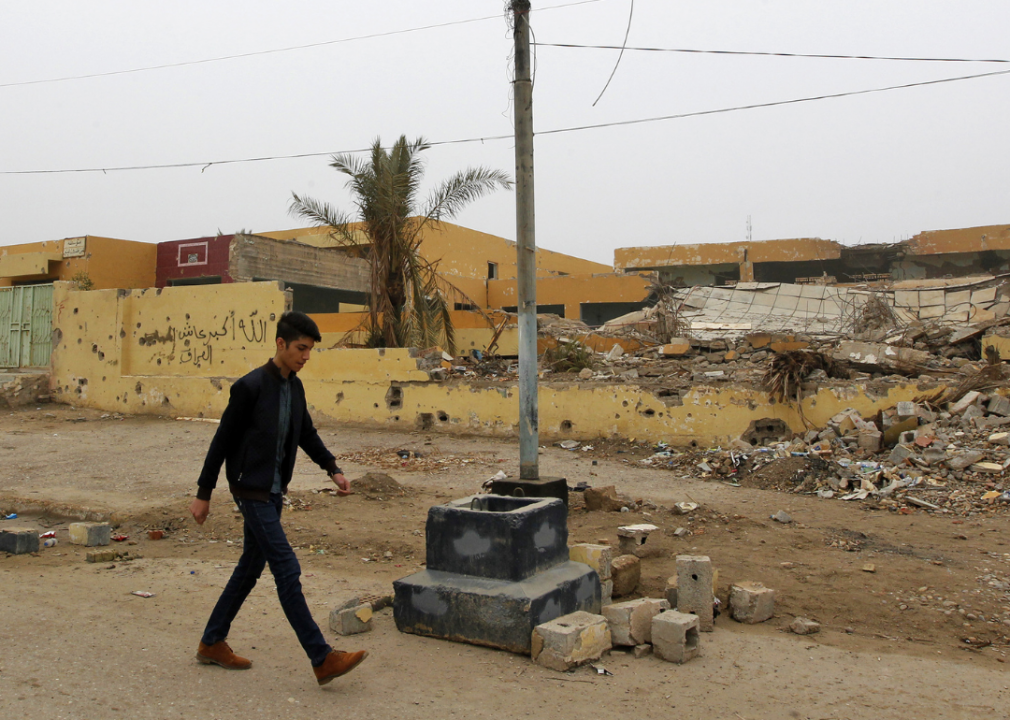
SABAH ARAR // Getty Images
Now: Fallujah, Iraq
Fallujah remains an unstable city whose residents are still traumatized by the effects of war and occupation. A Sunni city in a Shiite country—Saddam Hussein, a Sunni Muslim, used ruthless terror to subjugate Iraq’s Shia majority—Fallujah still hadn’t recovered from the battle when al-Qaeda took over in 2006, only to be replaced in 2014 by something even worse—ISIS.
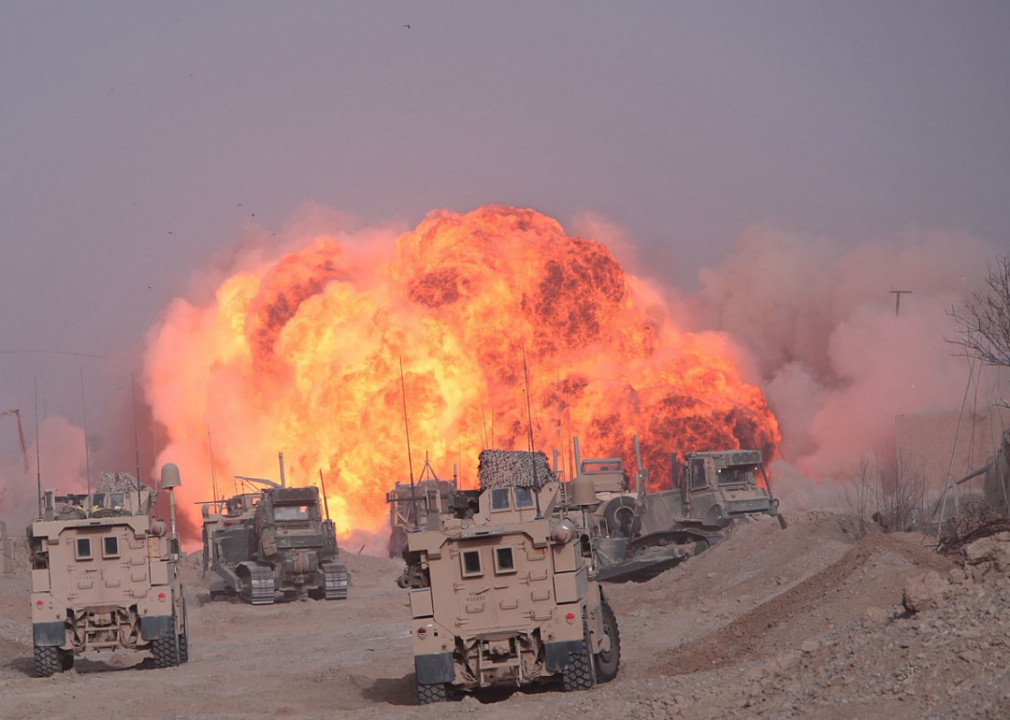
Cpl. John McCall // Wikimedia Commons
Then: Sangin, Afghanistan (2010)
For both British and American forces, the name Sangin conjures images of the bloodiest battleground of the entire Afghan war—both countries would lose more than 100 service people there. Operations were led by the U.S. Marines “Darkhorse” unit, which was tasked with clearing the Helmand Province Taliban stronghold, which was teeming with enemy fighters and littered with countless IEDs.
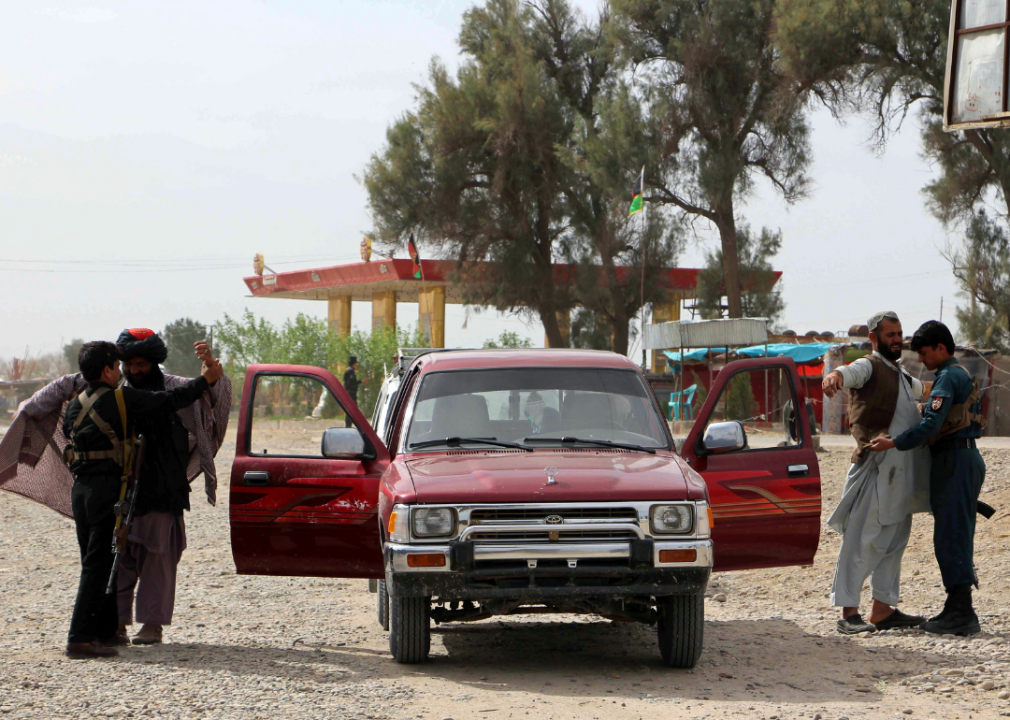
NOOR MOHAMMAD // Getty Images
Now: Sangin, Afghanistan
In 2017, the Taliban finally achieved its years-long mission of capturing and holding Sangin, a feat that so many Marines died trying to prevent. Peace talks concerning a transfer of power repeatedly started and stopped in subsequent years.
You may also like: Do you know the mayors of these major cities?


